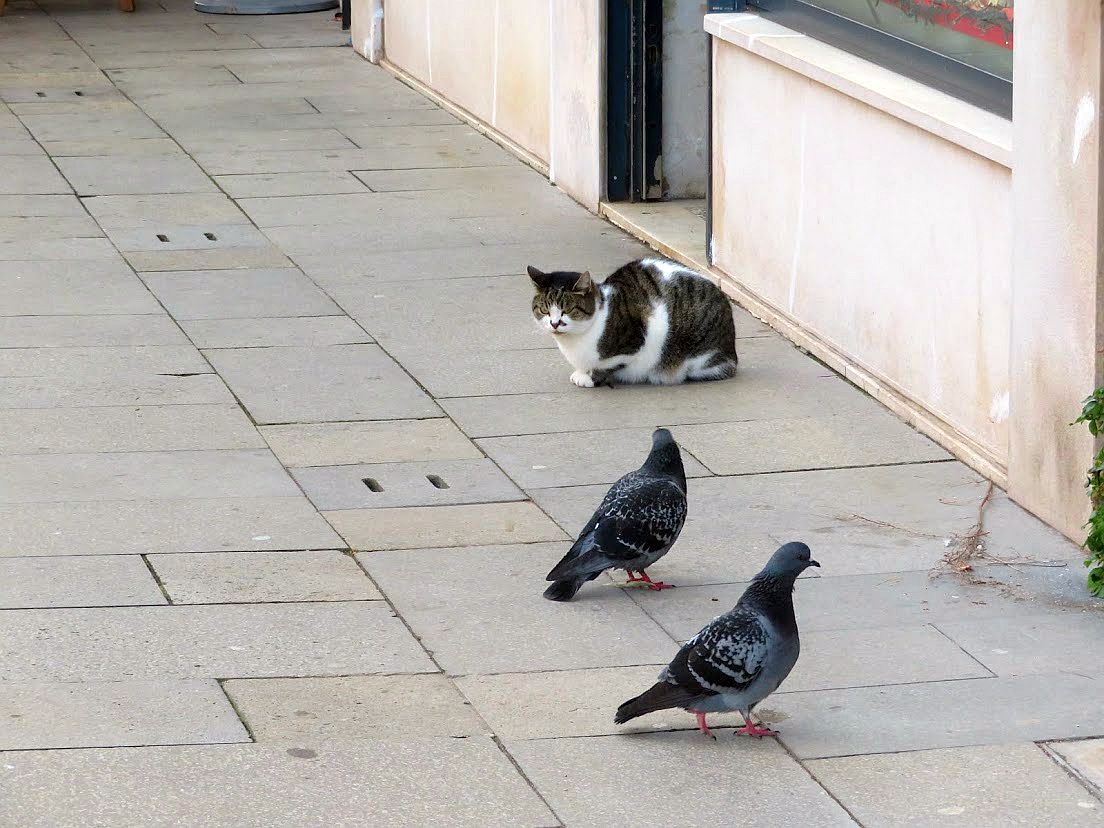Search results
83 results found.
83 results found.
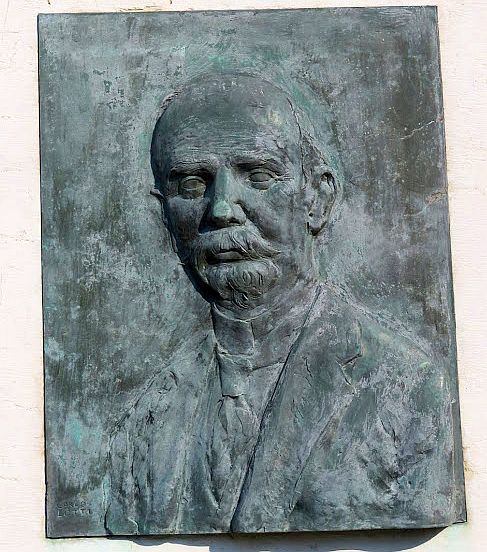
January 27 is International Holocaust Remembrance Day. Unfortunately today is also the beginning of Carnival, which makes anybody who cares even a little bit about one or the other — or worse, both — feel a tad awkward.
But I’m proceeding with Remembrance Day because it is an especially appropriate moment to remember doctor and professor Giuseppe Jona, once known as the “doctor of the poor” for his charitable care of indigent Venetians of every, or no, creed.
He didn’t limit his attention only to sickbeds. Among many other things, he was also the president of the Jewish community, and on September 15, 1943 he cared for his endangered people by making the ultimate sacrifice. In a sense he was killed by the Nazi occupiers of Venice, but he got one step ahead of them.
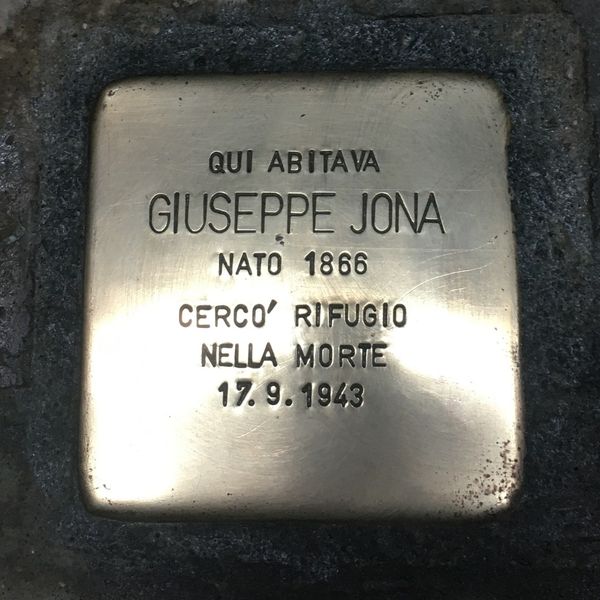
No need for me to be melodramatic. The facts are enough to delineate a person whom it’s unlikely anyone reading this could imagine emulating, but who must never be forgotten.
Giuseppe Jona (pronounced YOH-na) was born in Venice in 1866, the fourth of five children of a middle-class Jewish family, his father a doctor. He graduated from the University of Padova in Medicine, and served as professor of Anatomy at Padova as well as working at Venice’s hospital. Over the course of 40 years he became head of the department of Pathology (1905 – 1912), and Medicine (1912-1936).
Unmarried, he “lived for his brothers and nieces/nephews,” says one article about him, “for his students and colleagues, for social projects and scientific research.” Above all, he was dedicated to developing young doctors at the hospital’s “Practical School of Medicine and Surgery,” founded in 1863 to enable department heads to prepare young doctors by taking them on rounds in the wards. He also introduced a methodic approach to performing autopsies, and served as an auxiliary doctor in military hospitals during World War I.
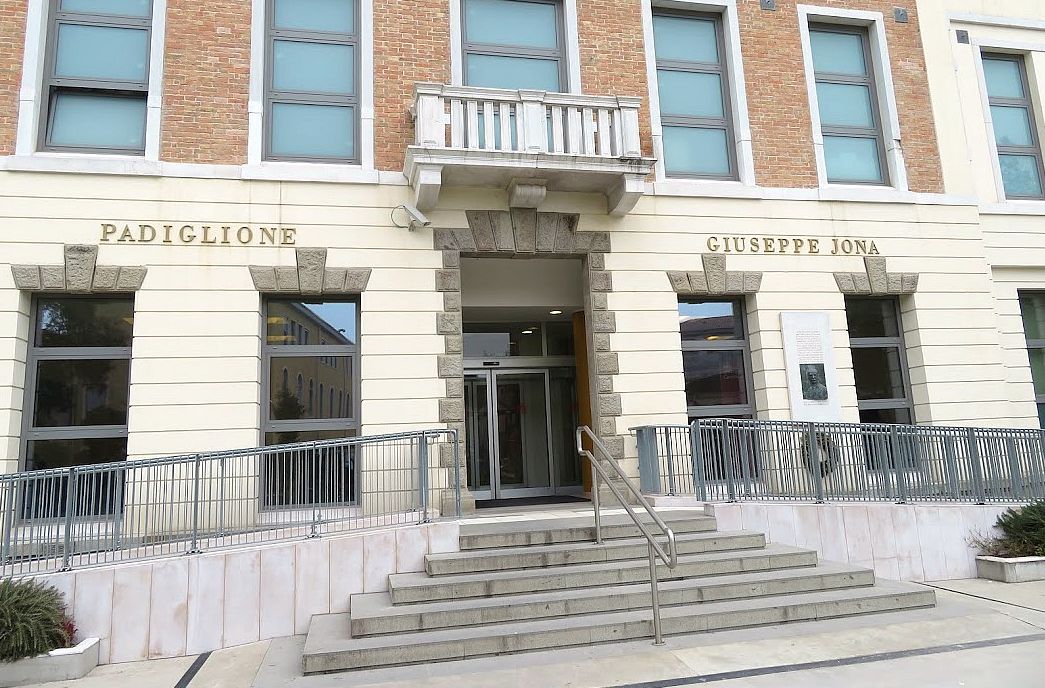
His world stretched far beyond medicine, though. He became a member of the Istituto Veneto di Scienze Lettere ed Arti, and was president of the Ateneo Veneto (the supreme intellectual group in Venice, I’m going to say) from 1921 to 1924. He founded a circulating library. He founded a museum of anatomy at the city hospital. I’m leaving out enormous masses of information but the point is that he was known and esteemed by Venetians in many different fields and levels.
Now we get to the heart of the man. Along with his sister, he always sought out the neediest patients in several hospitals, convinced that it was a human obligation to try to mitigate social inequality regardless of religion or belief. He then opened a medical studio where he treated the poorest patients free of charge. He came to be commonly referred to as “the doctor of the poor.”
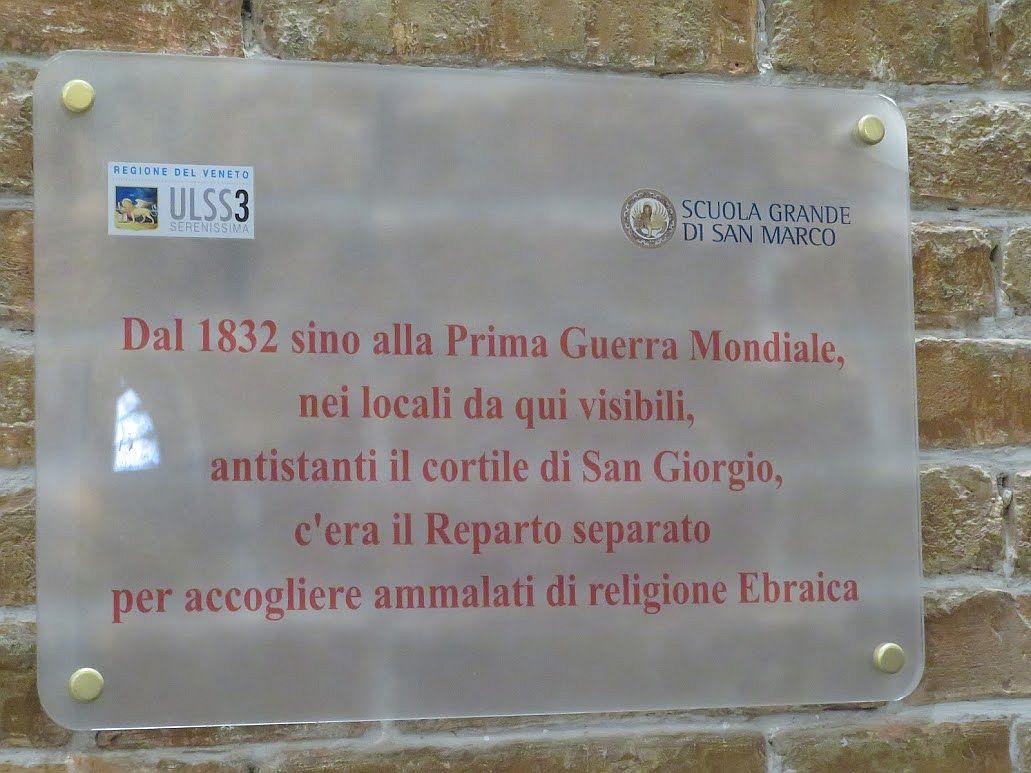
He resigned his position at the hospital in 1936, probably intuiting that what became the “racial laws” in 1938 were already on the horizon, edicts that would have required his expulsion from the hospital, followed by expulsion from the scientific and cultural institutions to which he belonged. In 1940, along with every other Jewish physician, his name was removed from the official register of doctors, thus being forbidden to care for any patients whatever. (He continued to visit them at night, wrapped in a vast cloak and hat.)
At that moment, the rabbi and council of the Jewish congregation, perfectly aware that Jona had never attended the synagogue and wasn’t known even to be a believer, elected him as president of the Jewish community. With his sensitivity to ethics and as a sign of respect to his parents, he accepted.
Of course matters became steadily worse. Friends and colleagues urged him to leave Venice and flee to hiding in the countryside; he refused.
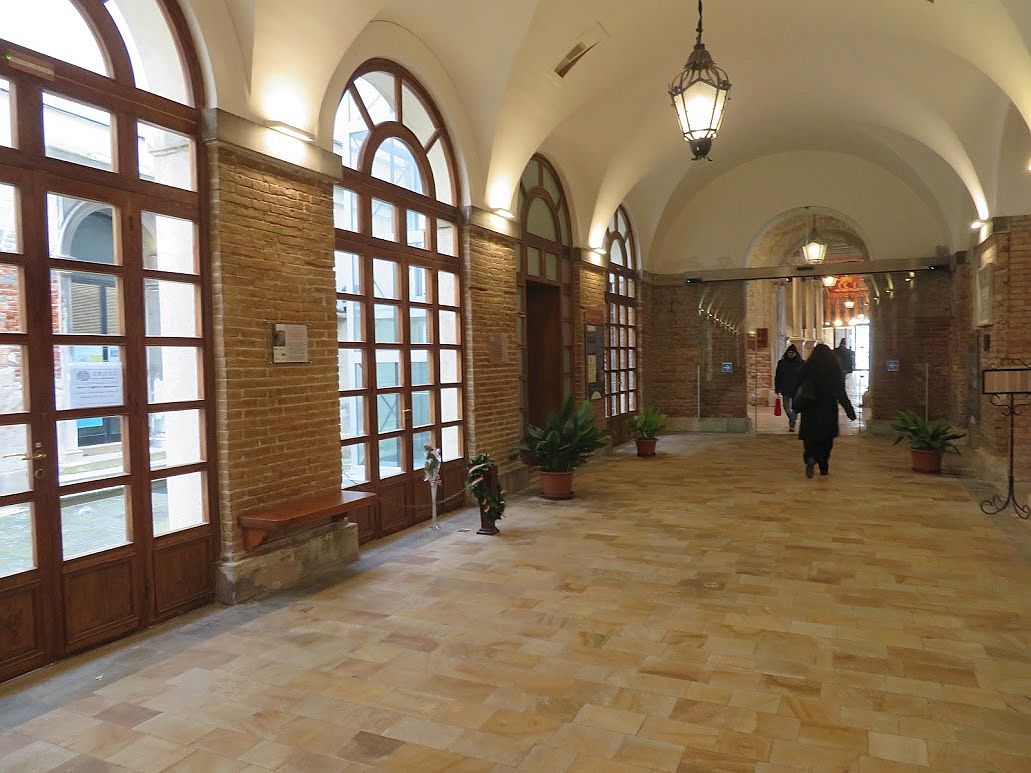
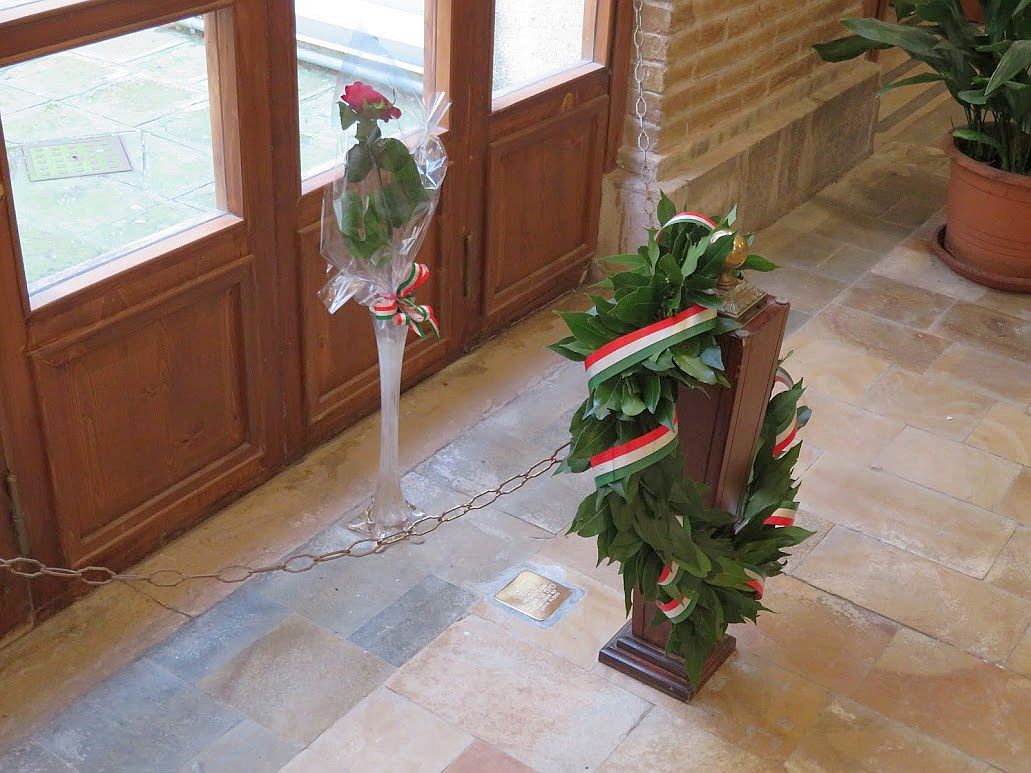
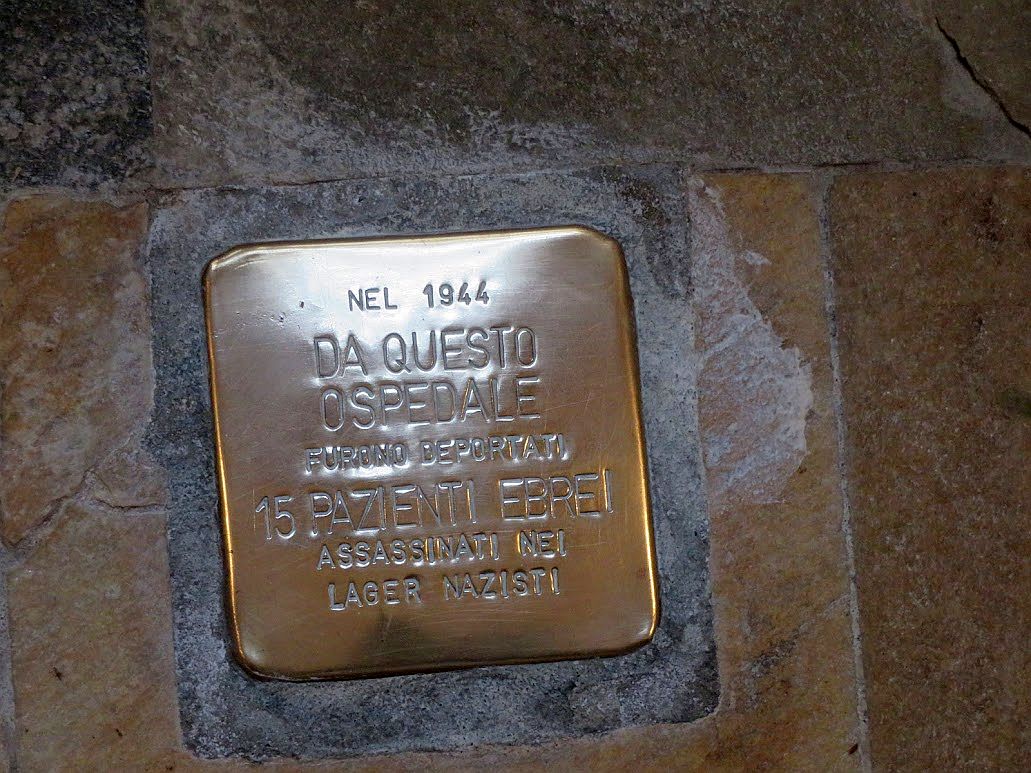
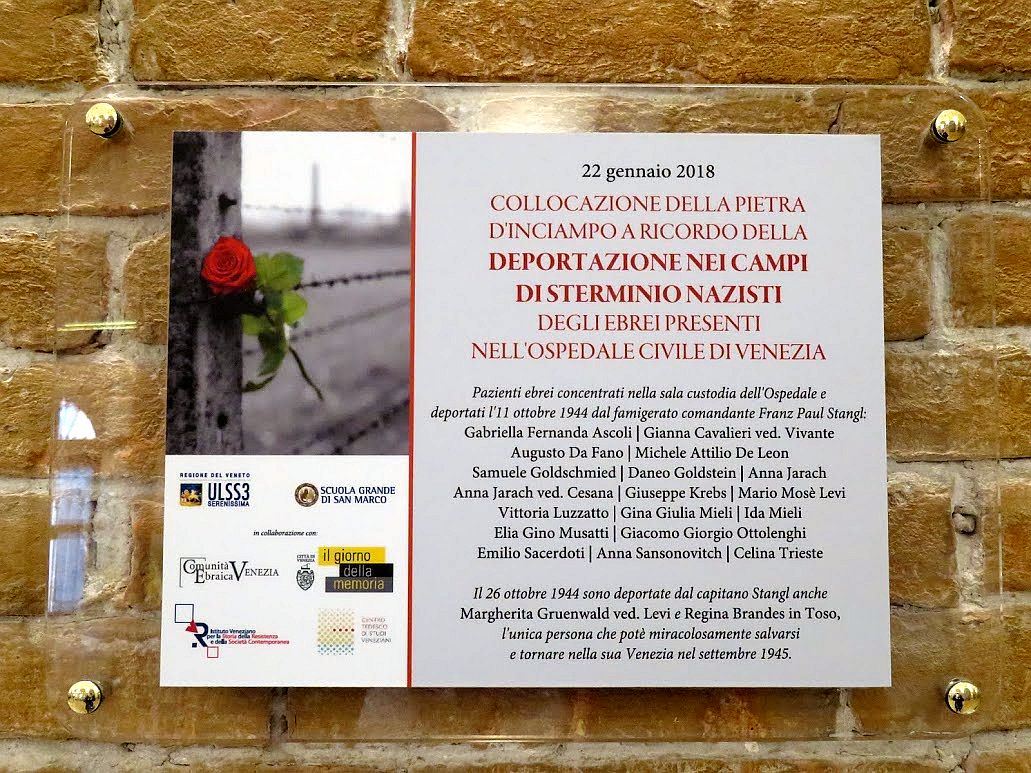
In the autumn of 1943 the Nazi occupiers, under orders from Captain Franz Stangl (already commandant of the Treblinka extermination camp), ordered Jona to submit the names and addresses of the 1,350 Jews in Venice. Their fate was essentially sealed.
Giuseppe Jona had already written his will, in his tiny, precise handwriting, leaving his 1,684 books to the city hospital, and his money and belongings to an extraordinary assortment of groups and organizations serving the poor and needy. He also made a bequest to the family’s elderly servants, who could never have found other income.
It was the night of September 15, 1943. Certain that he would not be able to withstand the torture that would follow his refusal to provide the list, he destroyed every document that could identify members of the community. And then he gave himself a fatal overdose of morphine. His body was found on the 16th, and the death registered on September 17. The entire city was in an uproar; the startled Germans forbade a funeral cortege and basically waited for it all to blow over.
And the 1,350 Jews on the list? In some manner he had enabled 1,100 of them to escape.
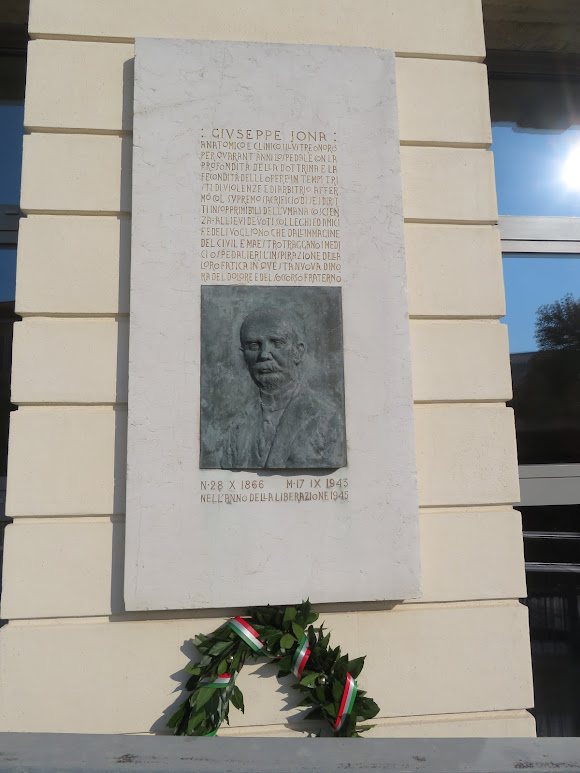
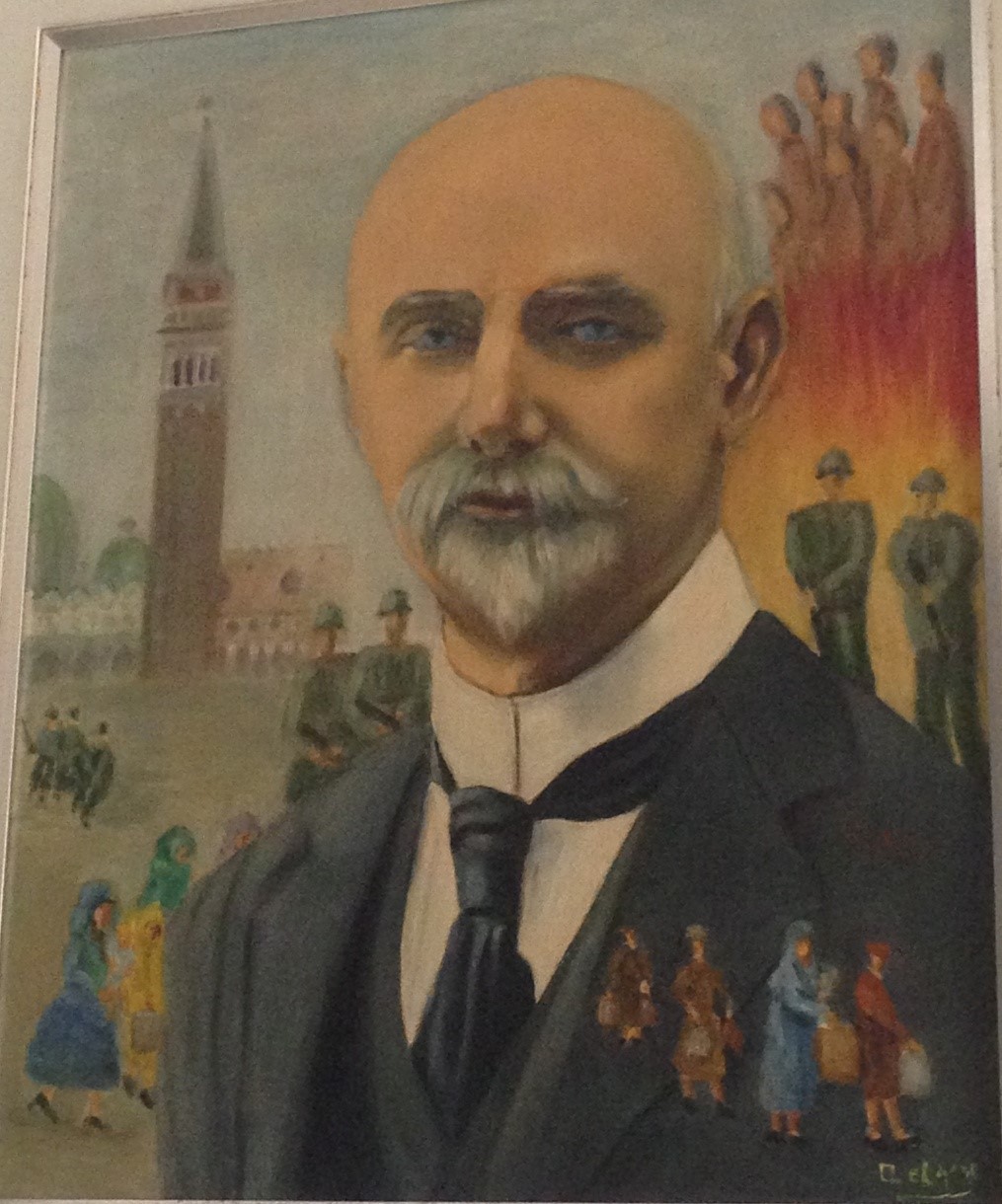
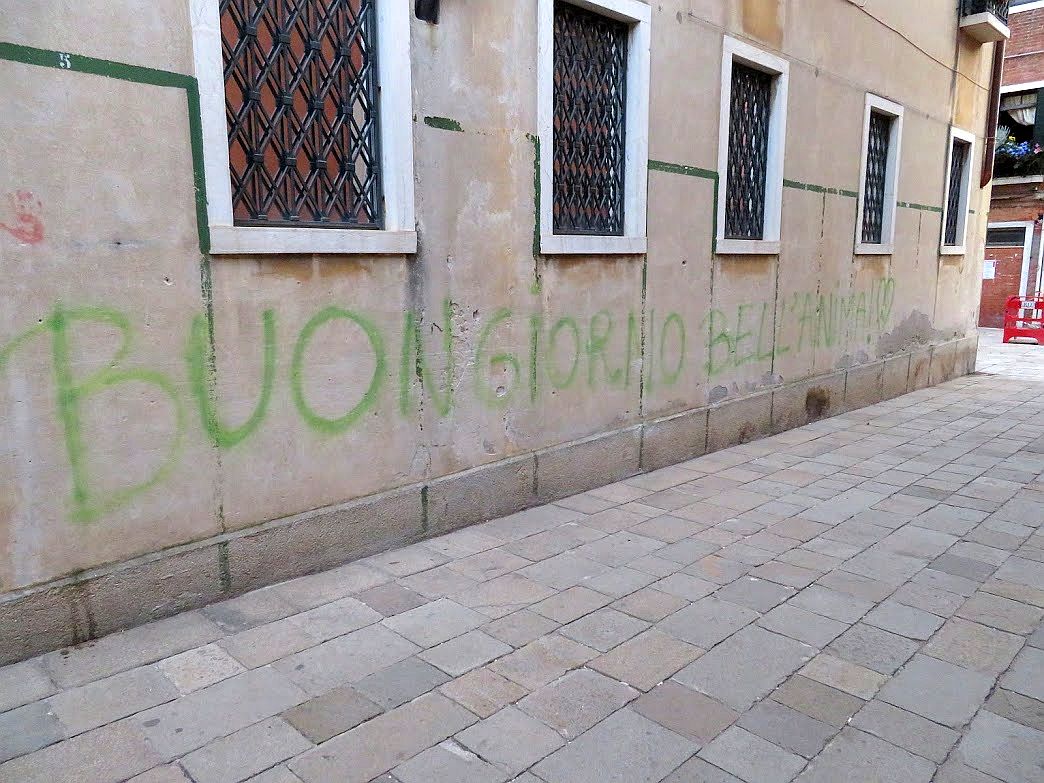
There are 20,000 entries under “Venice” on amazon.com. (I’d have thought there were more, actually.) But that’s only the English-language site. Amazon Japan lists “over 6,000.” In any case, whatever your language, Venice is going to be there somehow. Histories, novels, travel guides, poetry, cookbooks, memoirs and, for all I know, limericks and postcards and old flight boarding cards.
Add to that mighty flood the tributary streams of academic studies and research and theses, the reports from national and international committees, the torrents of daily news and opinion pieces and blogs. Anyone during the past millennium with a brain and a pencil seems to have written something about Venice and there is no end in sight. It would appear that you cannot be a warm-blooded, live-young-bearing creature that is alive who has not written something about Venice.
But within this Humboldt Current of ideas and facts and fantasies there are plenty of other thoughts and feelings that flow through daily life here. Letters to the editor are fine, but it’s much simpler (and cheaper) for the vox populi to make itself heard through signs. These come in all sorts of ways, but they’re everywhere.
There are the personal messages from the heart. The heart above is in wonderful shape, but there are many that aren’t.

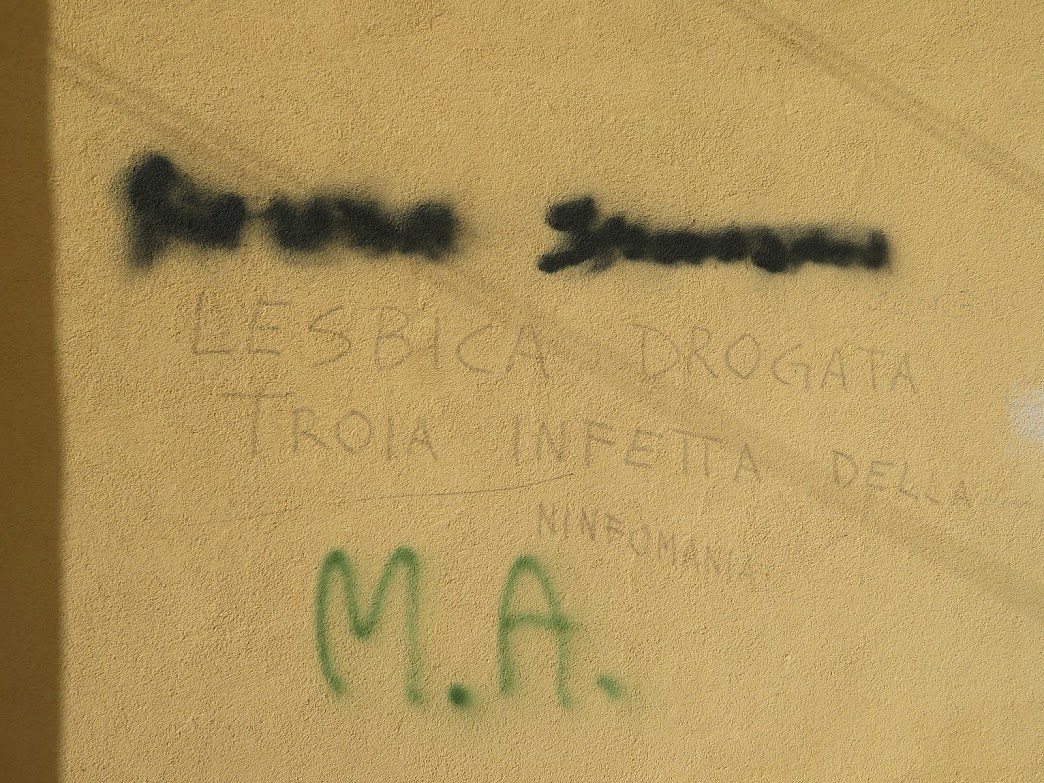
Neighborhoods bubble with exasperated reminders of some basic rules of civility, in varying degrees of sharpness. One eternal theme is dog poop.
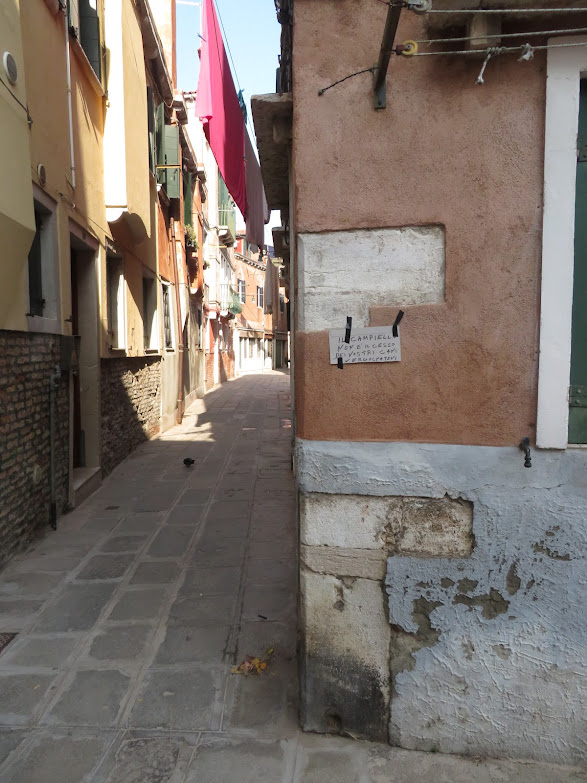

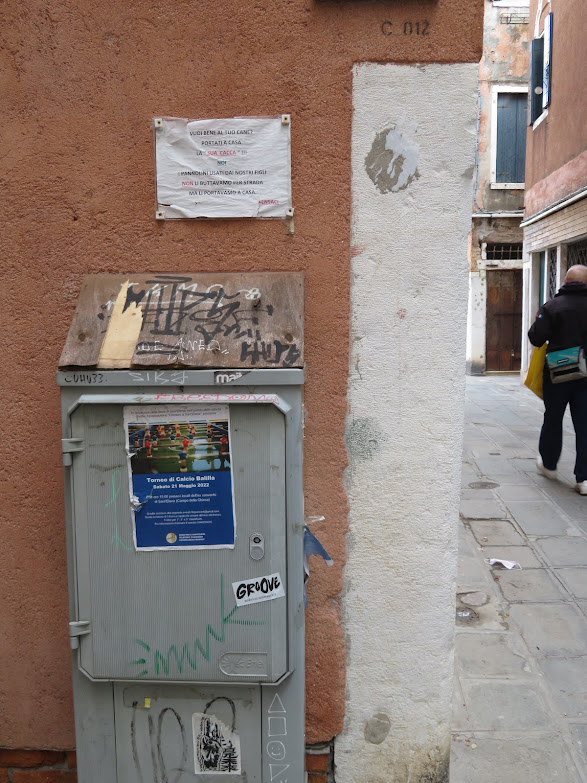
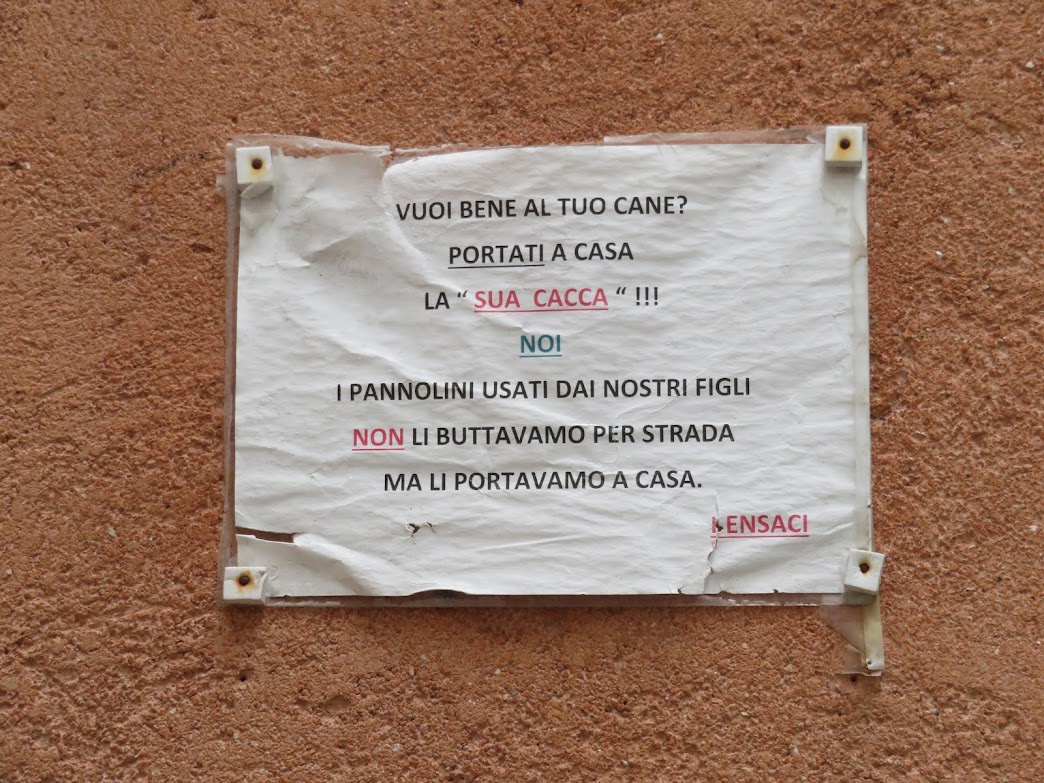
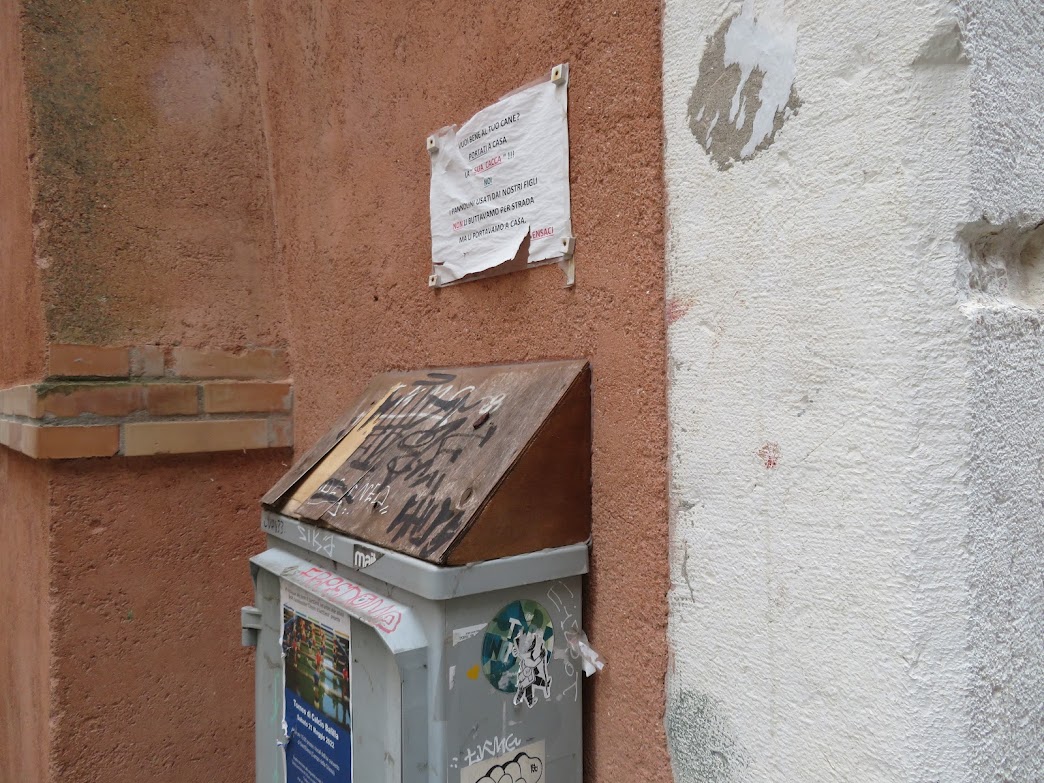
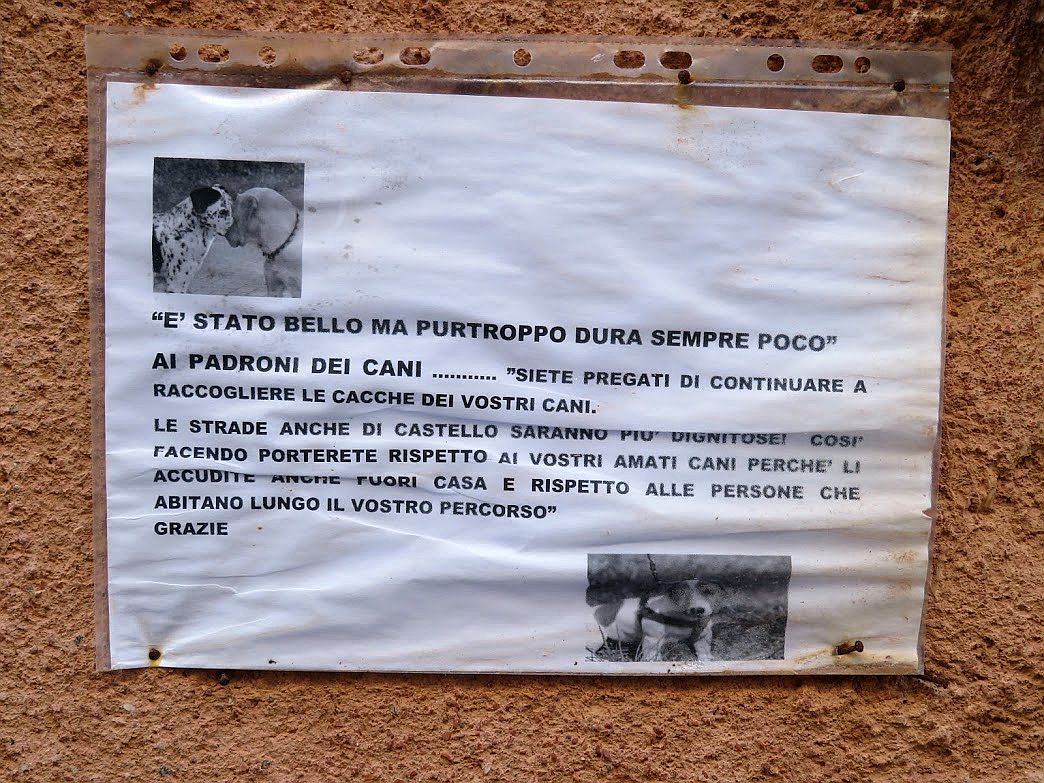
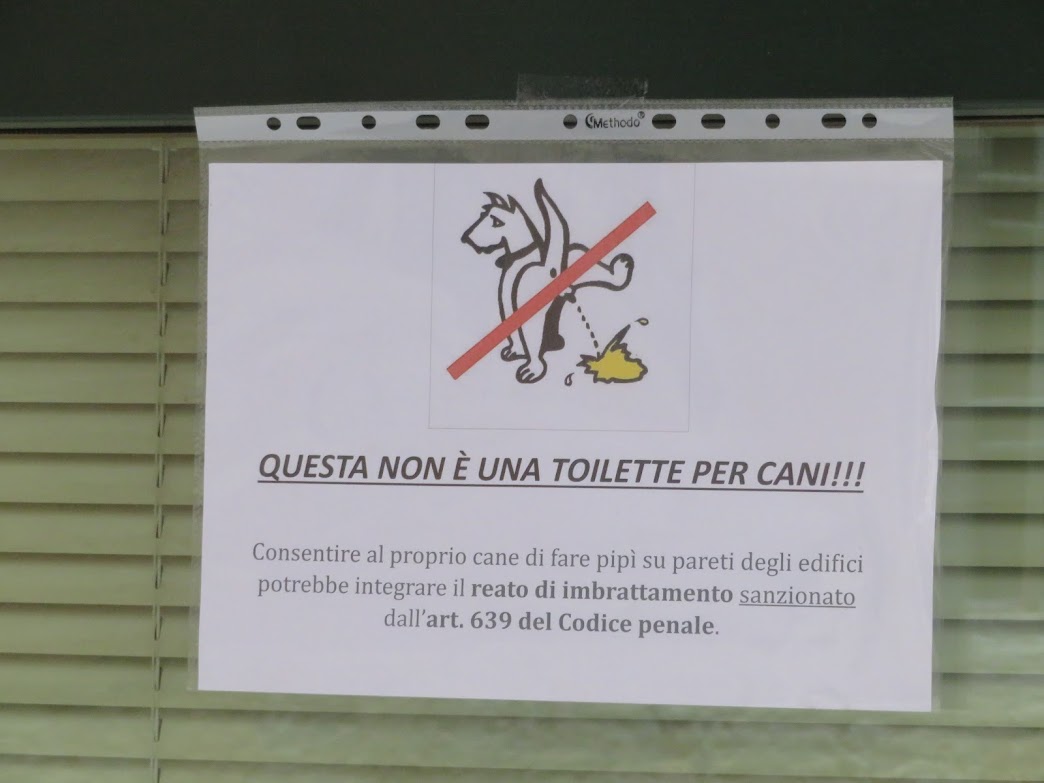
On to the hazards of maintaining a small earthly garden in the street.
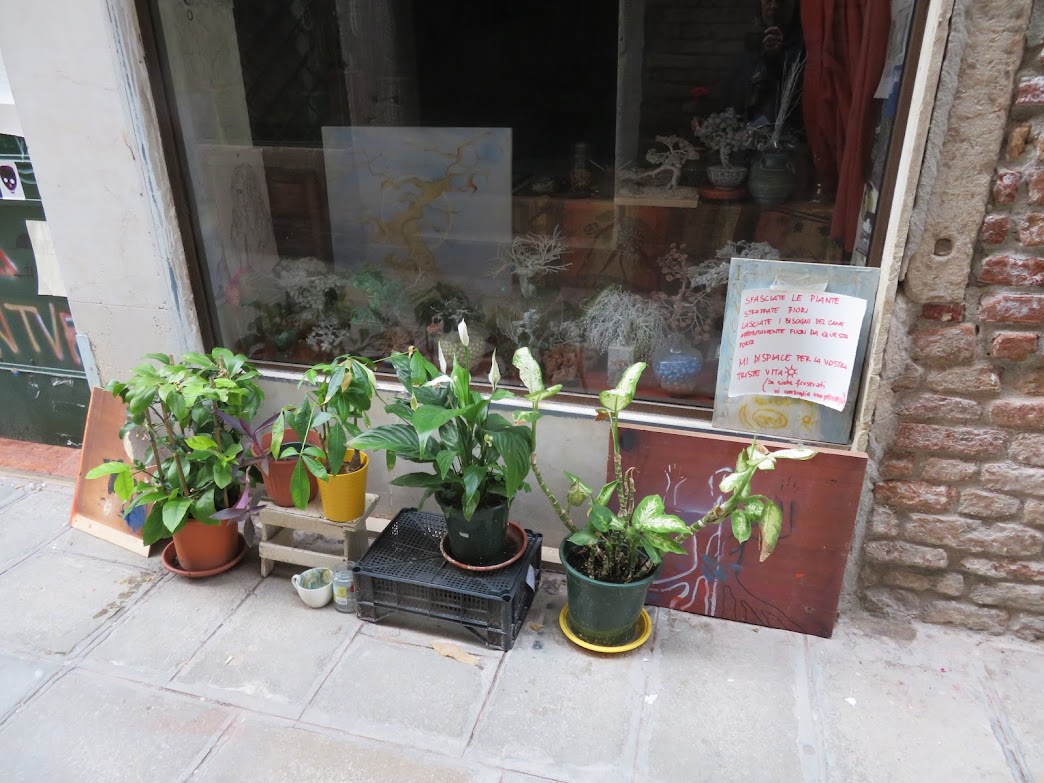
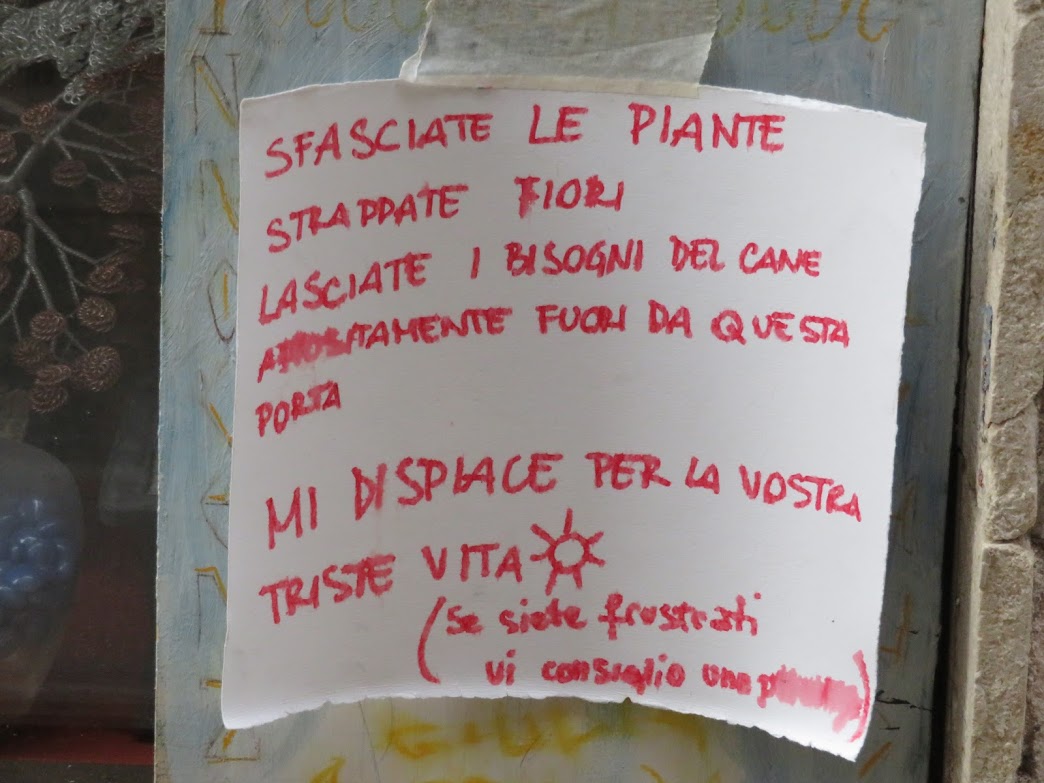
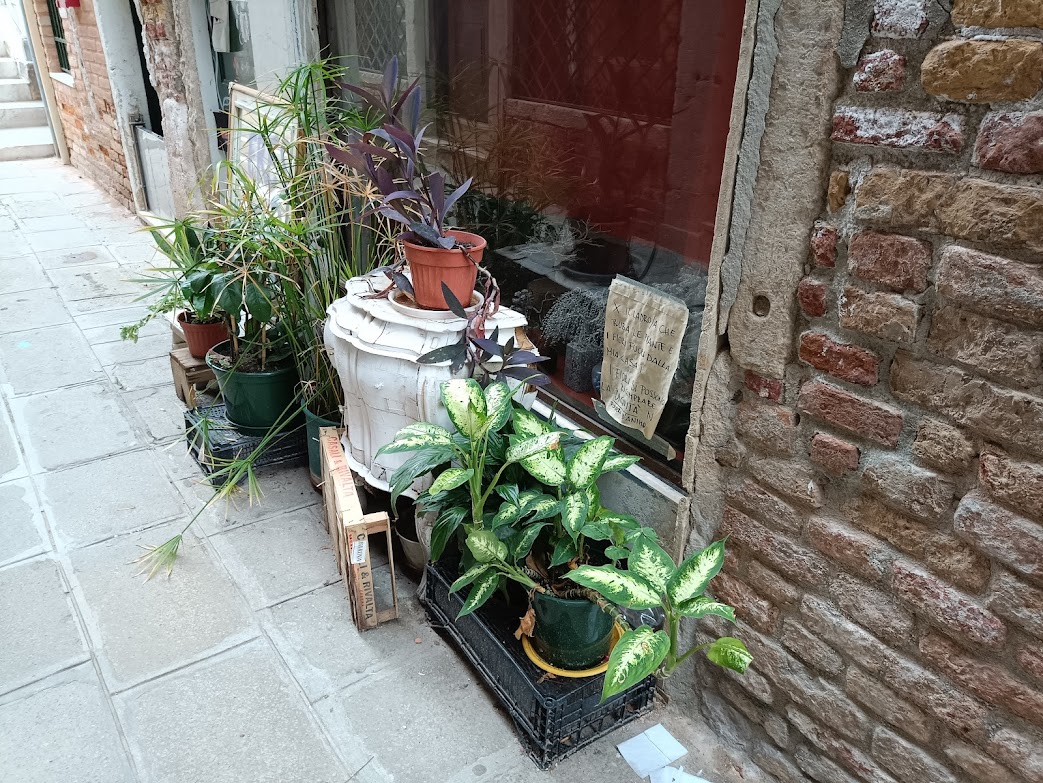
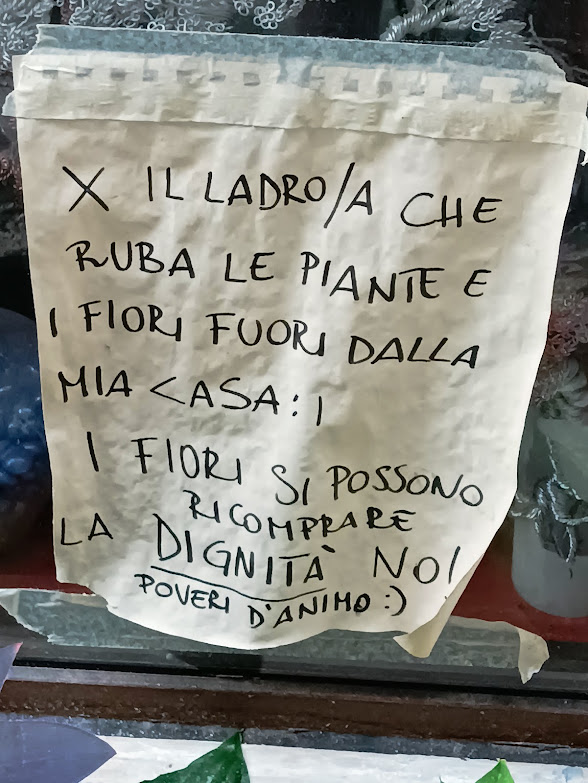
On a happier note, there is a little old man named Valerio who continued to work in his carpentry shop for decades, or perhaps eons, considering how extremely old he looks. But he kept at it until one day…
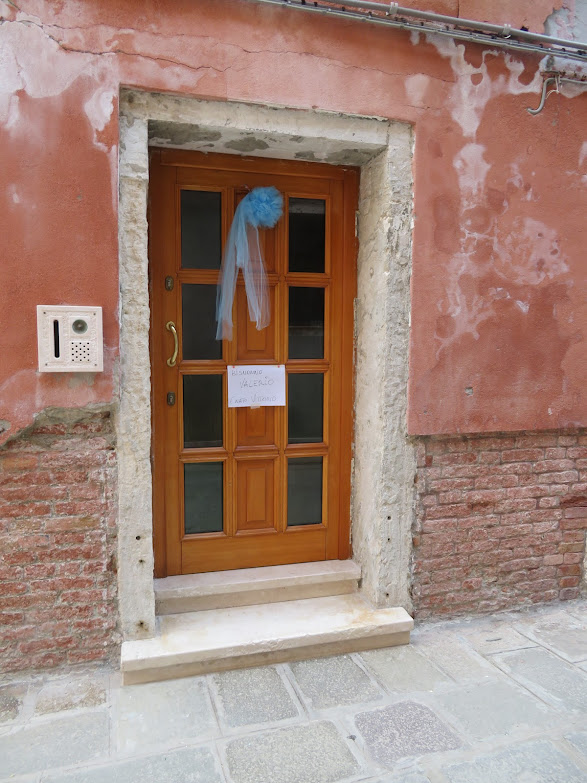

Not many days later, a sign appeared on the workshop door:
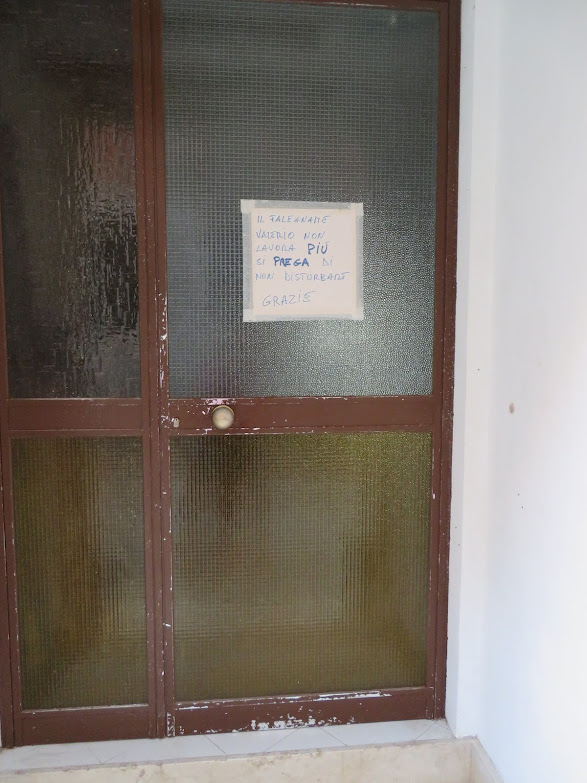
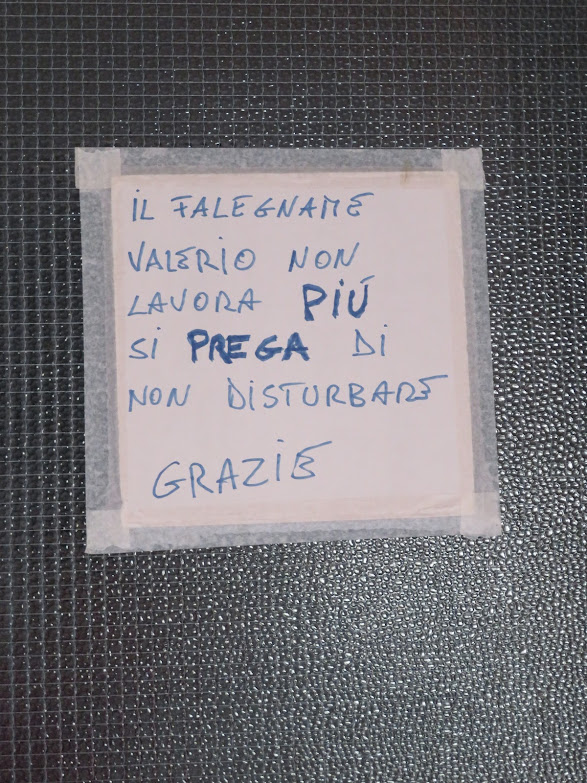
Tourists do not pass unobserved.
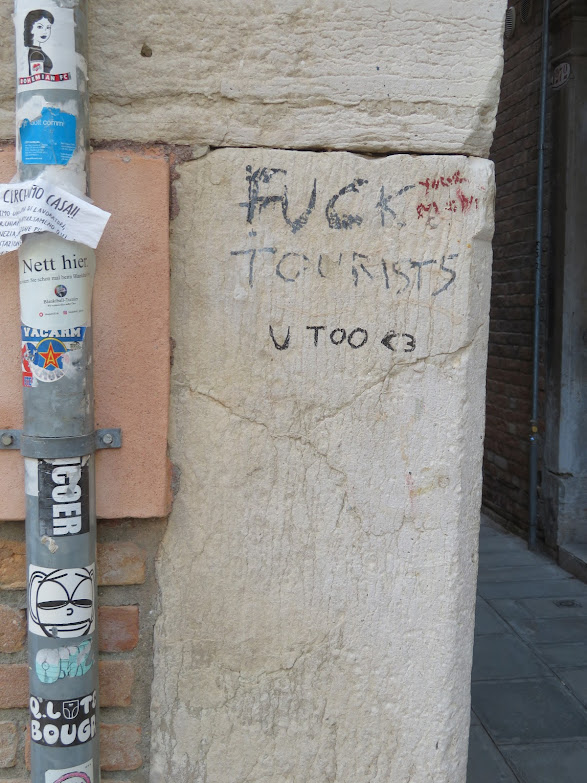
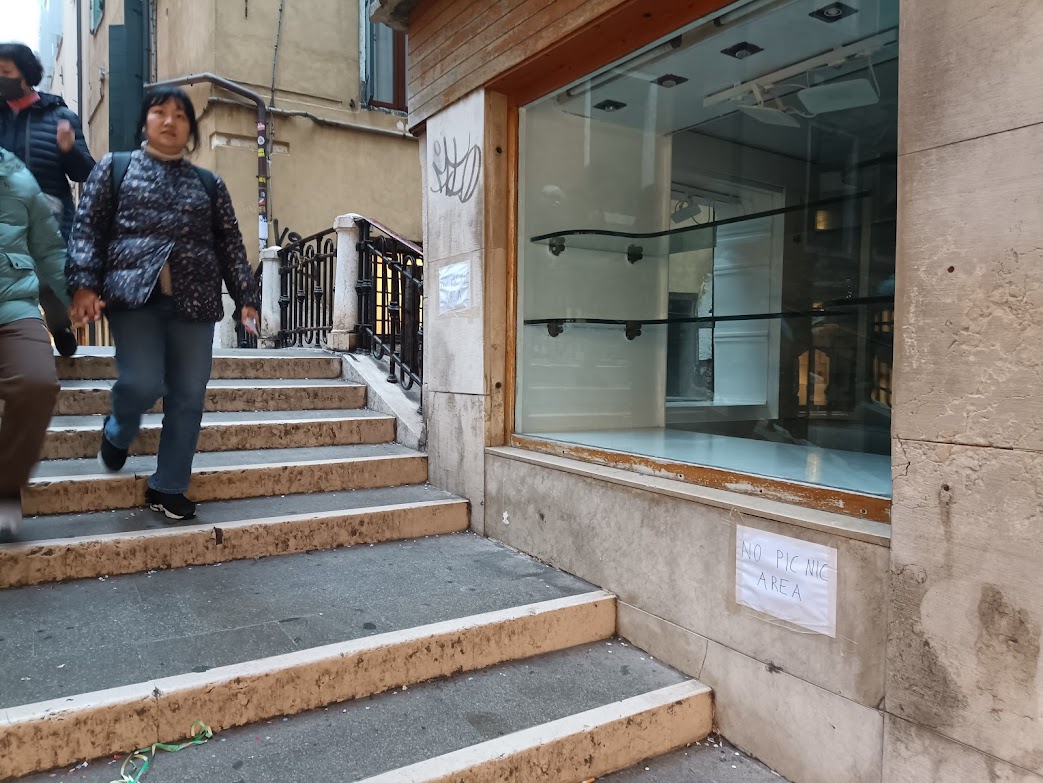
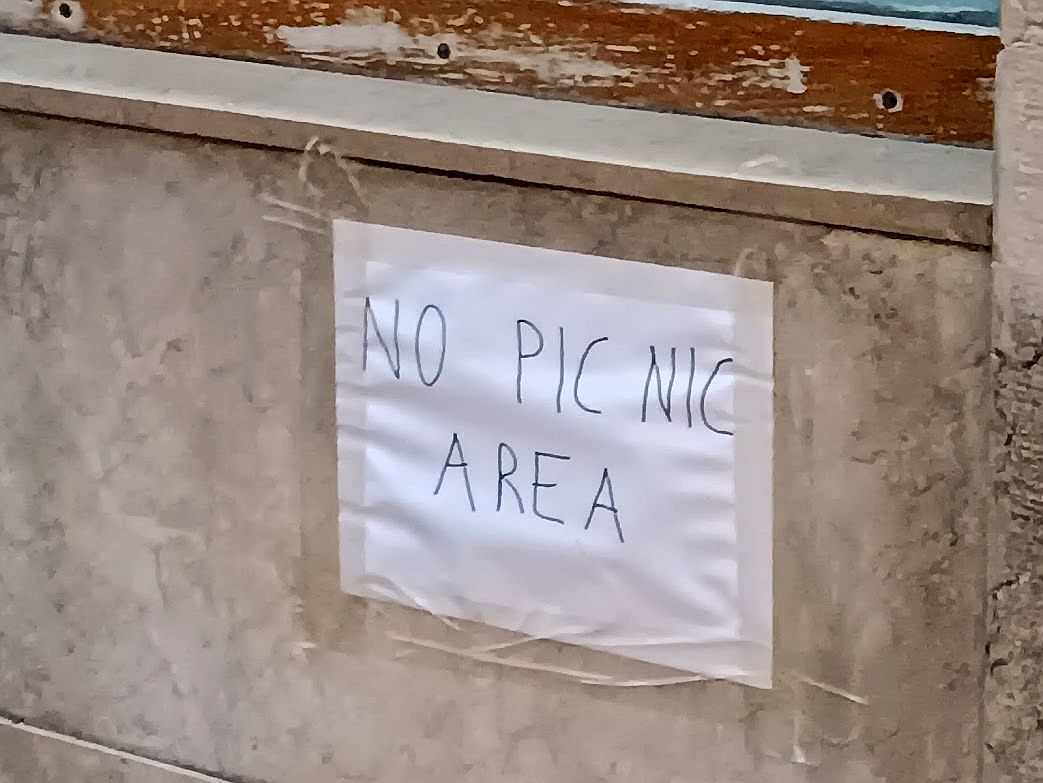
So much for signs for tourists. For locals, almost no details are necessary for communication:
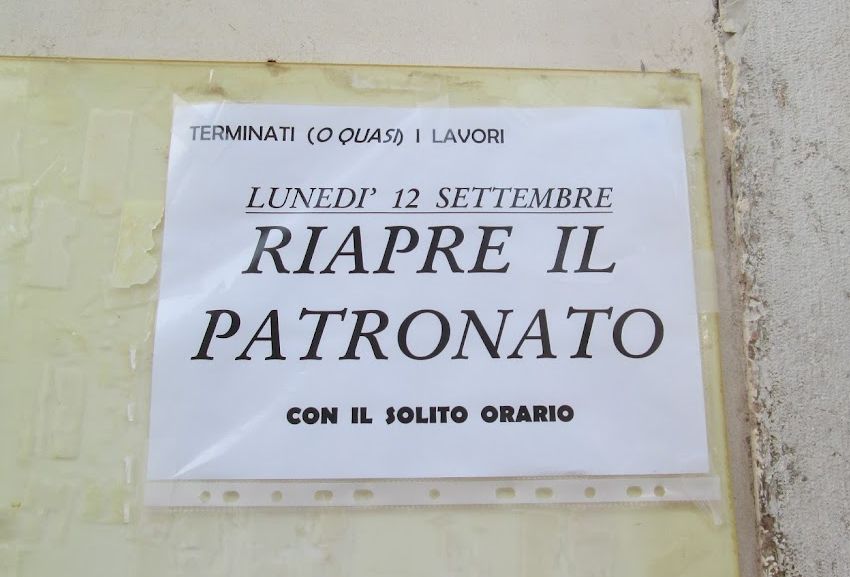
On a similar neighborhoodly note:
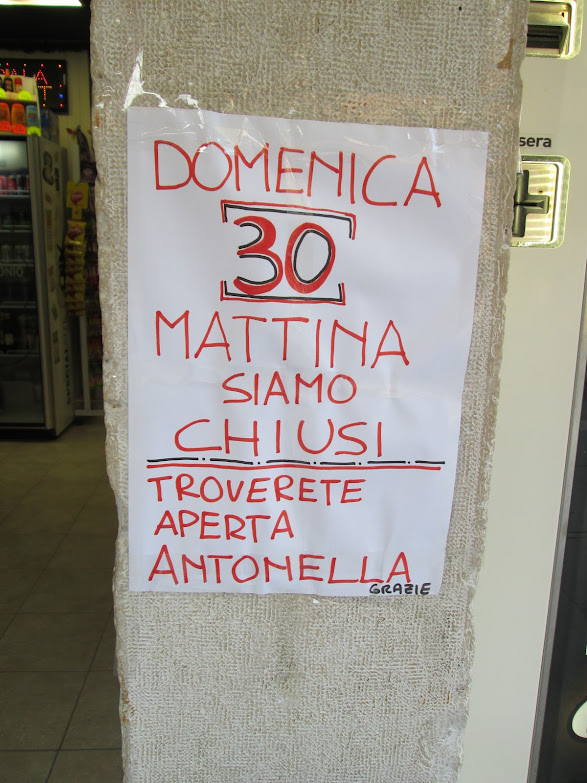
Moving into the realm of city government, or lack thereof, the Venetians in our neighborhood (and others, I can assure you) have plenty to say. The comments tend to run along the following lines (and I’m not referring to clotheslines):
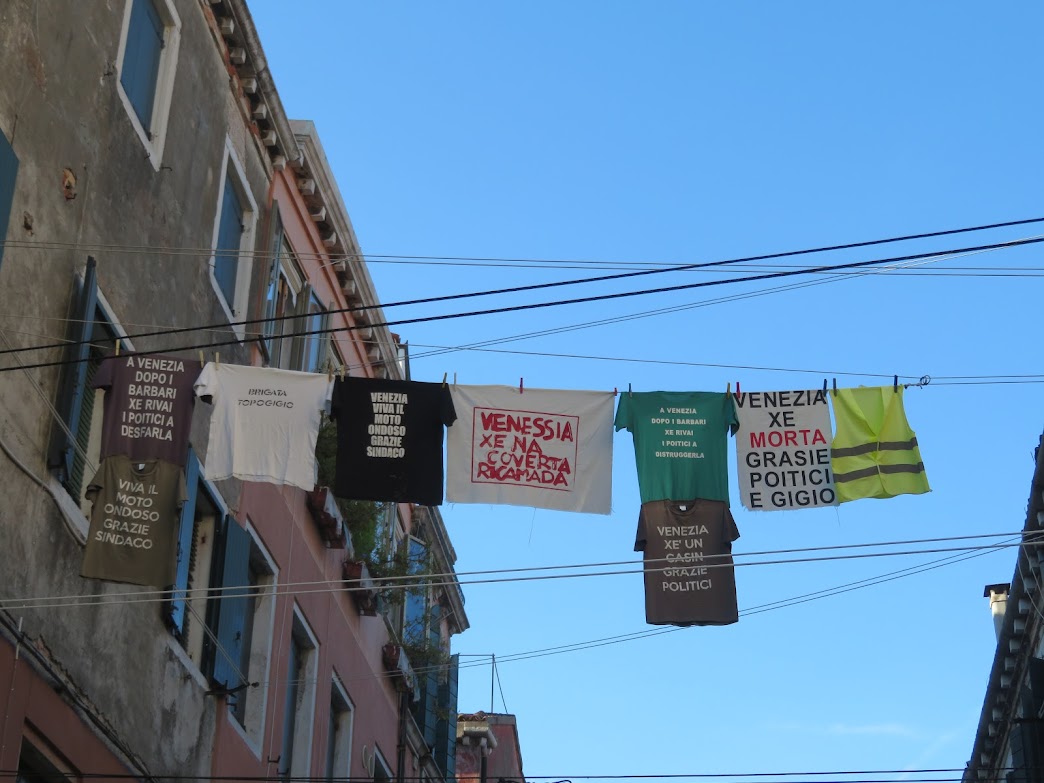

Continuing with the runic messages delivered by T-shirt: “Venice is an embroidered bedspread.” This one is complicated and I have no hope of clarifying its evidently metaphorical significance. I do know that there is a song that begins “Il cielo e’ una coperta ricamata” — the sky is an embroidered cover, which is lovely. Is the intention to say that Venice is as beautiful as an embroidered cover? I think there is some irony here, but it eludes me. Maybe I’ll run into this person again (I saw him at the fruit-vendor one afternoon) and I can just ask him. Meanwhile, on we go.
“Venice is a casin thanks politicians.” A casin (kah-ZEEN) is a brothel, where gambling also went on, and sooner or later tumult ensued. And not tumult of any polite, Marquess of Queensberry sort. It’s now the usual word for any situation that entails chaos, perhaps danger, racket and rudeness. It appears to many that Venice is speeding downhill with no brakes (again, motondoso comes to mind) and nobody at the wheel. Some people also refer to the city as “no-man’s land.” Literally everybody is doing whatever they want, and the result is pure casin.
Lastly, “Venezia is dead Thanks politicians and Gigio.”
While we’re talking about citizens’ discontent….

And this handwritten cri de coeur summarizing the profound crisis in the public health system. The people of lower Castello are persevering in their apparently hopeless struggle to obtain a reasonable supply of doctors:
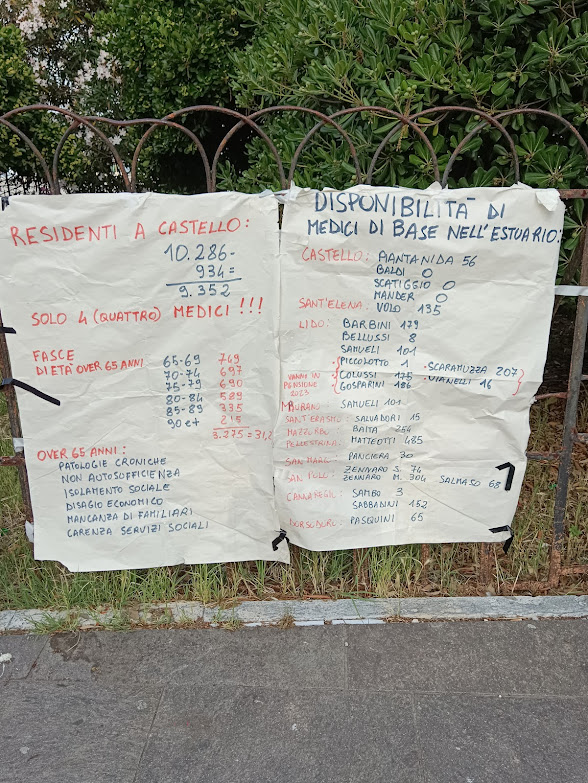
There are also signs without words that hint at approaching events or persons.
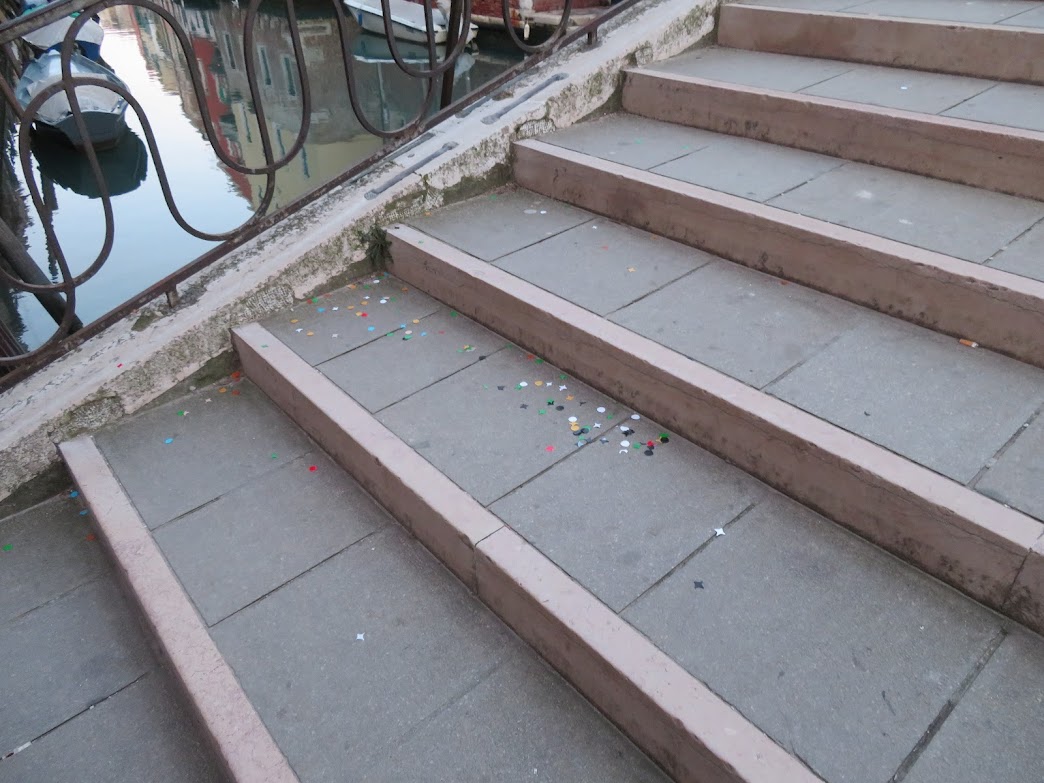


An approaching event I never thought I’d see. The city’s greatest housewares/hardware store having its final sale before closing. They tried to keep going after Covid. They stayed open all day (as opposed to closing in the early afternoon, like every reasonable store used to do). Then they stayed open all week. Unheard-of. It wasn’t enough. I can’t tell you how bad this is. I haven’t gone by recently to see what’s taking its physical place; not much can replace something so great. It used to be that useful stores (butcher shop, fruit and vegetables, etc.) would suddenly begin to sell masks or Murano glass. Now they will be either a restaurant or bar/cafe’. That’s my bet for the once-great Ratti.
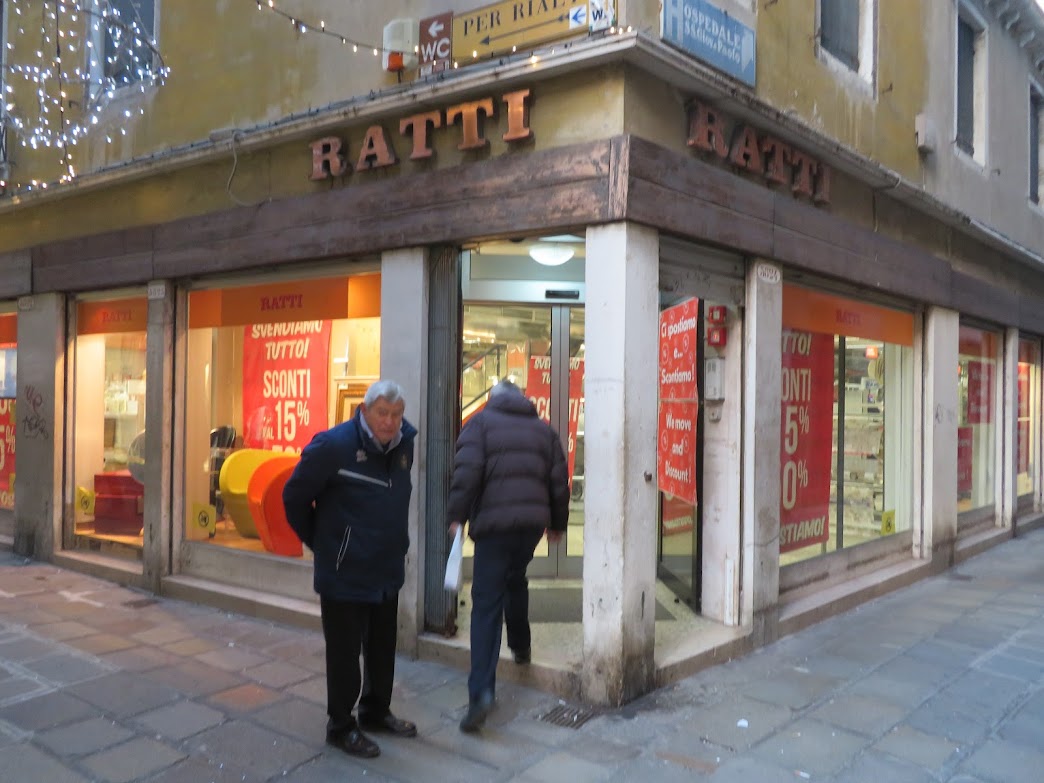
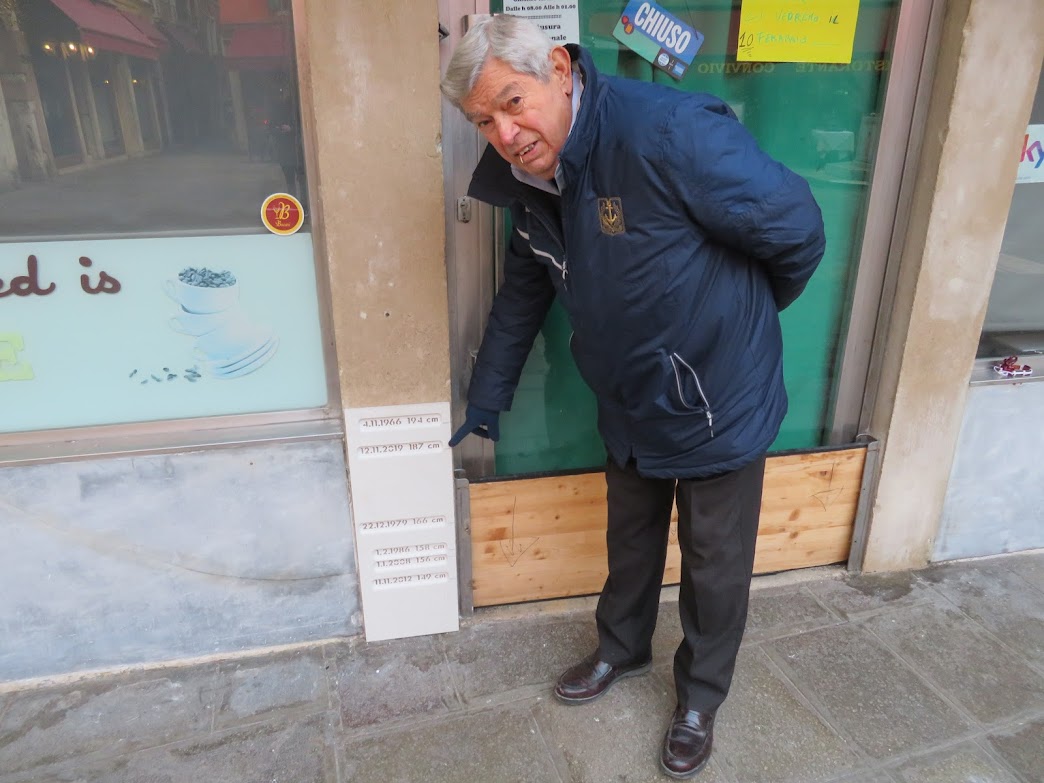
The arrival of certain foods are reliable harbingers of seasons or events, though seeing clementines for sale in October is not normal. But this is absolutely the moment for torboin (tor-bo-EEN).
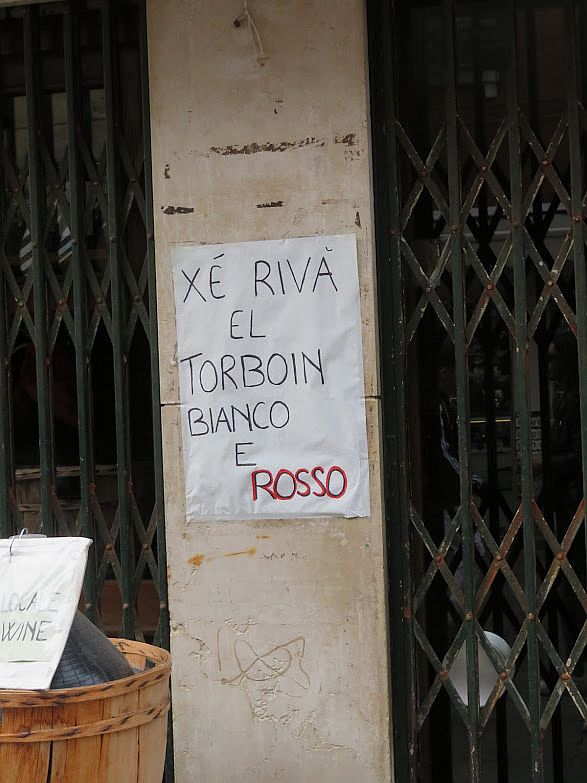
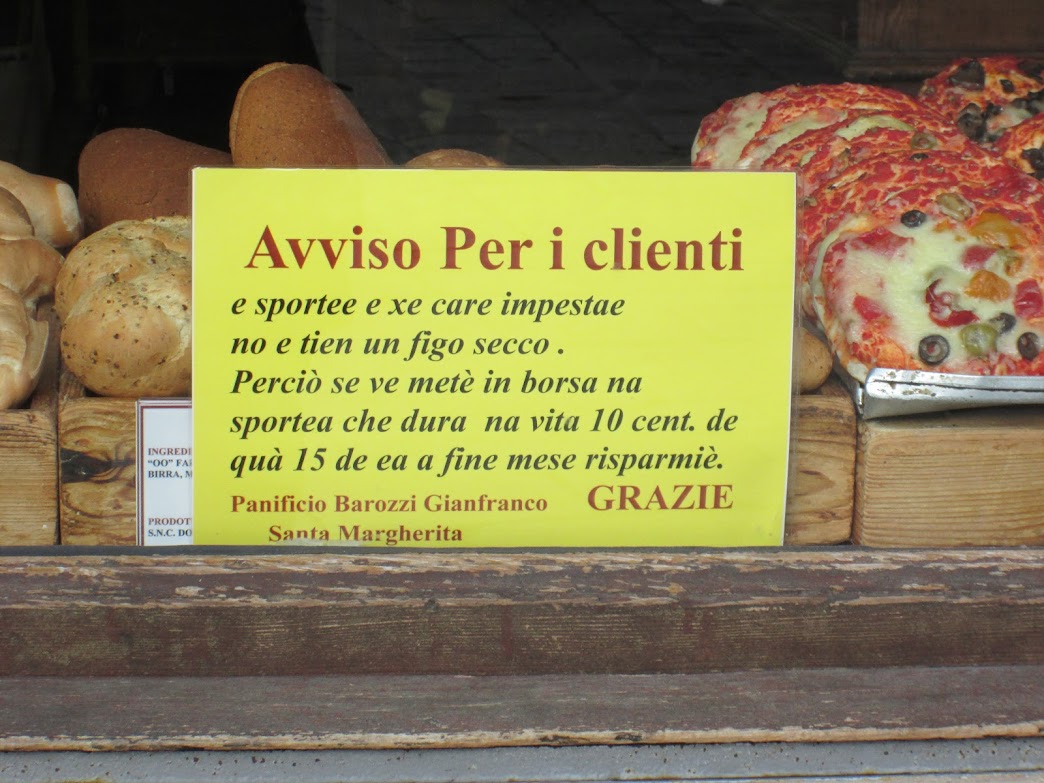
In a class by itself is this astoundingly inappropriate offer of a room with perhaps an undesirable view.
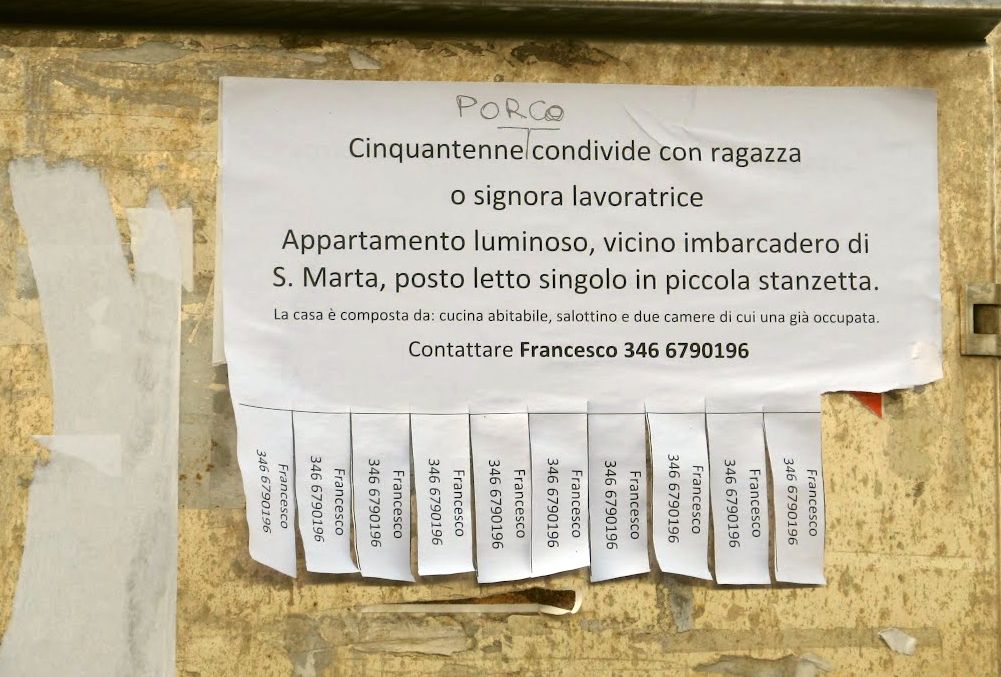
Above the chorus of voices on the walls there come a few magical notes from mysterious poetic souls.
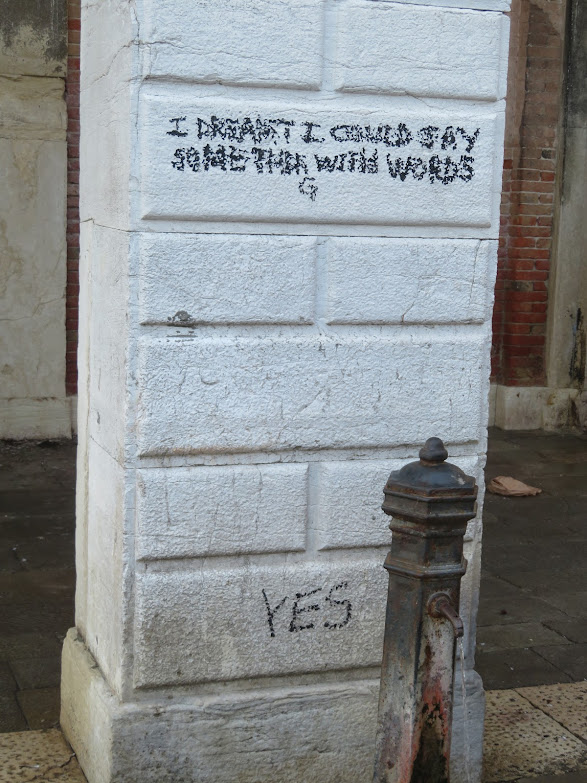
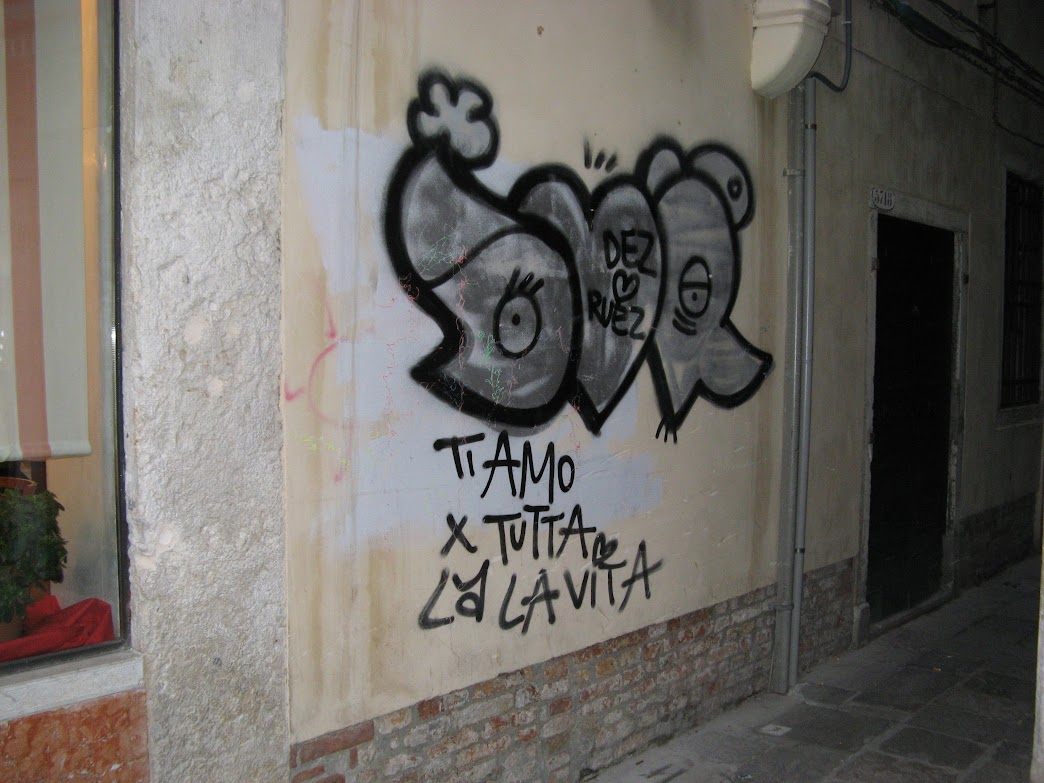

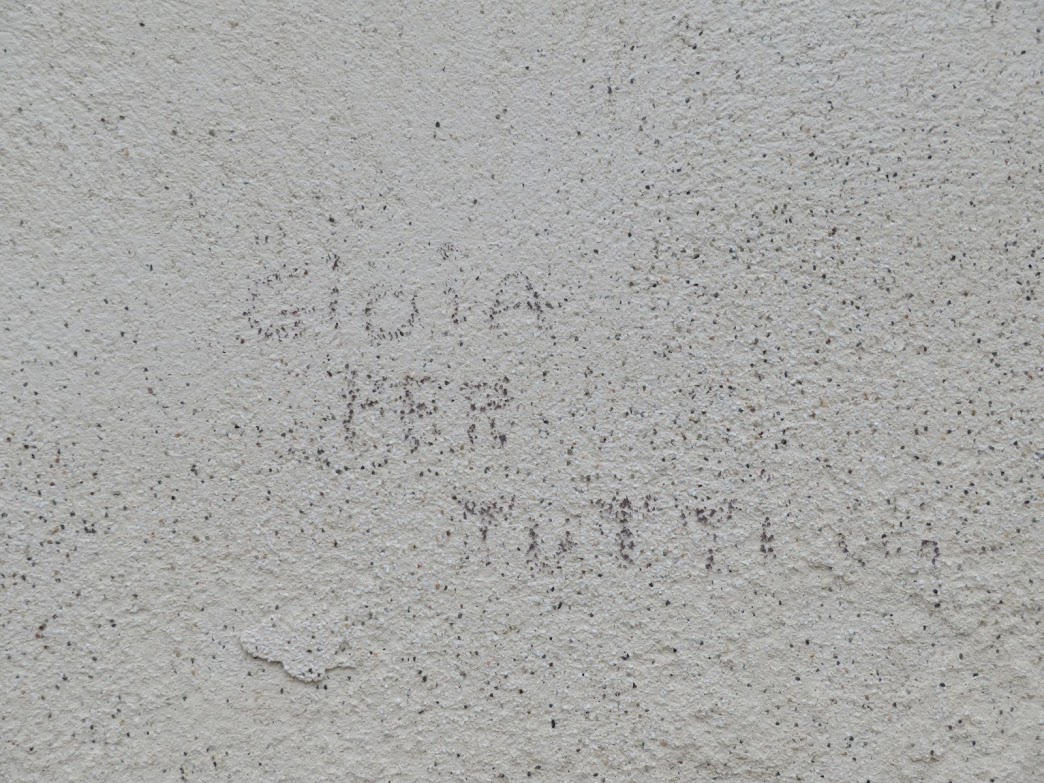
So by all means stroll through Venice looking at palaces and canals. Just don’t forget the walls.

About ten days ago, I said to Lino, “Welp, it’s just about time for those wild articles that come out every year yelling ‘Oh-my-God-there’s-no-more-water-in-the-canals-Venice-is-dyyyyiiiiiinnnnnnnng’ to start appearing.”
And sure enough, just as soon as the exceptional low tides began to suck the water out of the canals, the television/online/daily newspaper news in many places began to wail.
Unhappily for the interested public, the people who really would like to understand what’s going on, these articles are not helpful. For one thing, there is a serious drought afflicting the mainland, and photos are showing rivers running dry. Rivers dry, canals dry — the drought has hit Venice! Logical! Obvious! Wrong!
Rivers and Venetian canals are not at all the same, for the simple reason that the Venetian lagoon isn’t fed by rivers, streams, lakes, or rain. It is fed by the Mediterranean Sea, Adriatic department. The canals are tidal: Six hours in, six hours out. No water at the moment? It will be back shortly.
Every Venetian knows that in January and February there will be exceptional low tides. This is no novelty, they even have a nickname for the phenomenon: le seche de la marantega barola.
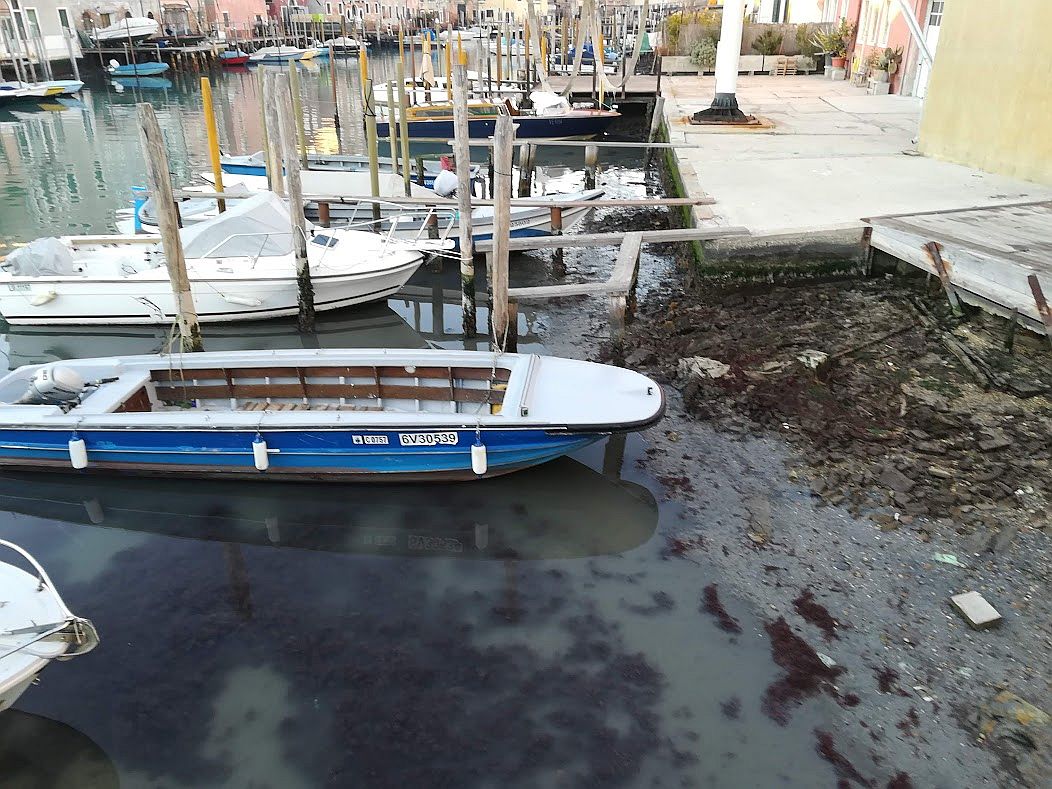
I can’t overstate this: The low tides are NORMAL. They are predictable. The only thing that changes is the time at which the tide begins to fall or to rise, and the expected maximum depth. And then you plan accordingly. By “you” I mean people whose work depends on using water. If you live in Venice and the water takes you by surprise, you can’t be paying attention.
The lowest low tide this year, so far, was Monday at -68 cm below mean sea level. I was impressed; I’d never seen it that low. But this is nothing!
The Tide Center maintains a trove of historical data, and guess what? Between 1874 and 1989 there were plenty of times that the tide dropped even more dramatically — ranging from -90 cm (4:30 PM on February 24, 1876) to – 124.5 cm (January 18, 1882, at 4:10 PM). Almost all of these exceptional low tides were in January and February, with a few in December and March. We know they are coming! They always come! And then they leave!
Too bad the reports never show the same canal, six hours later, brimming with water. But that would spoil the whole story.
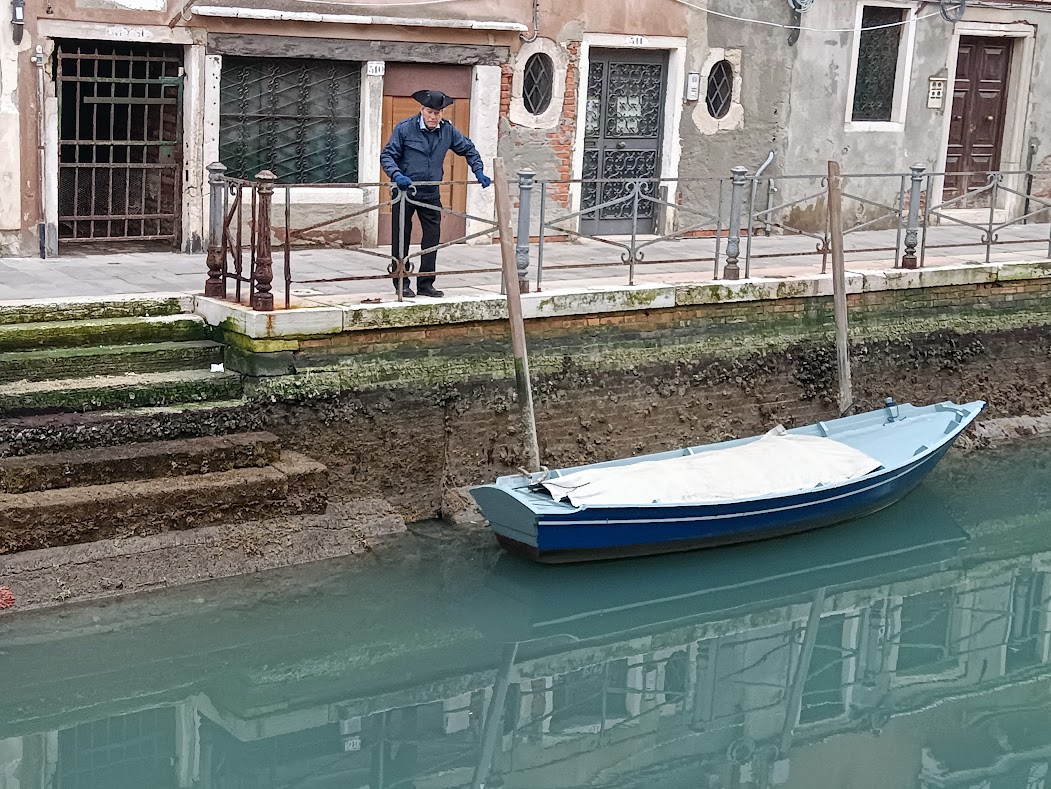

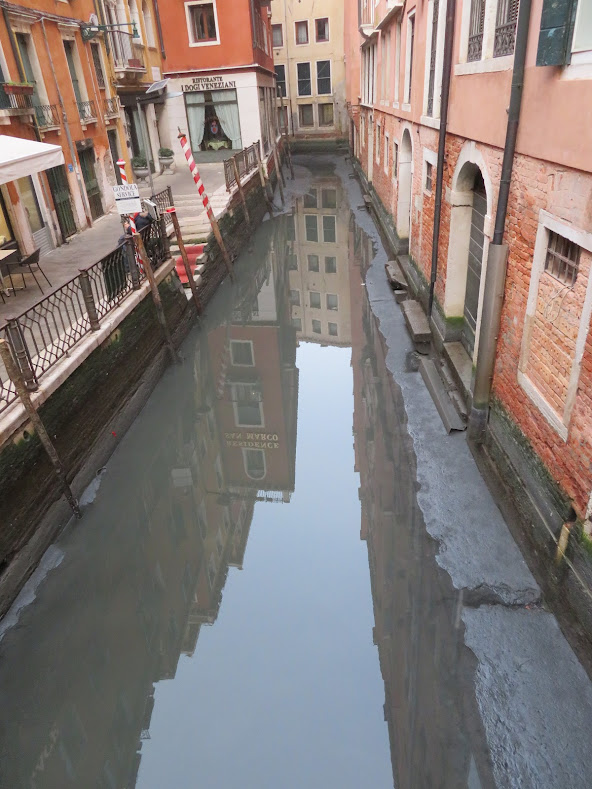
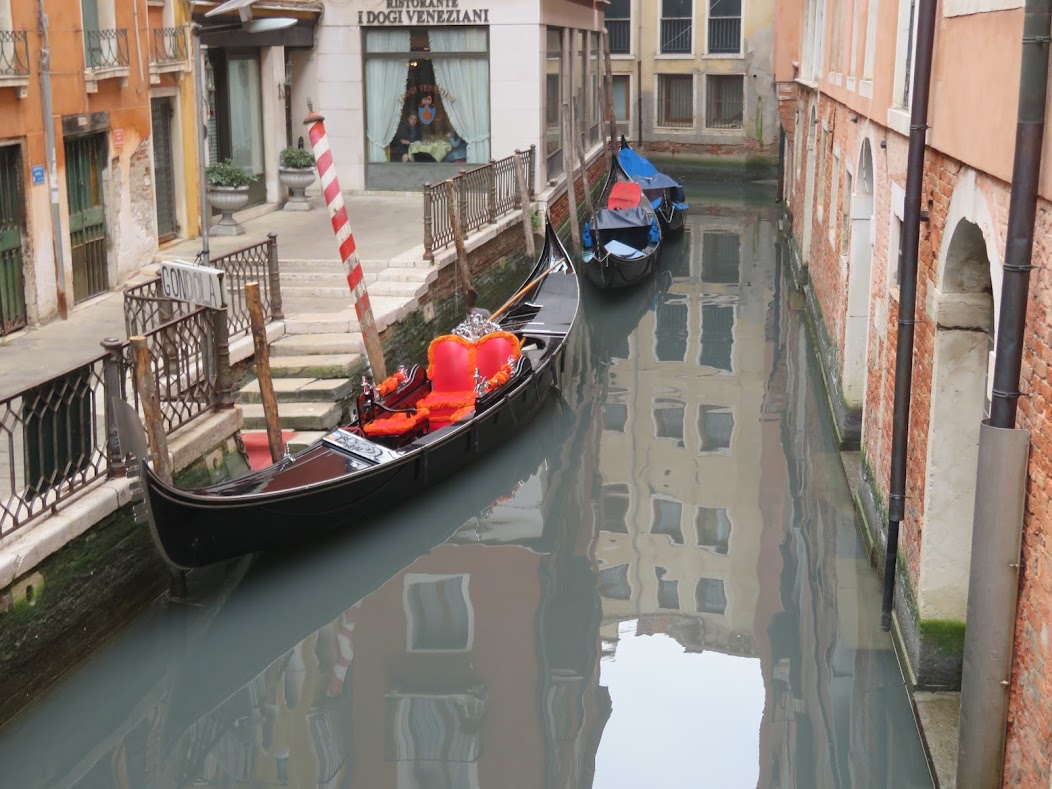
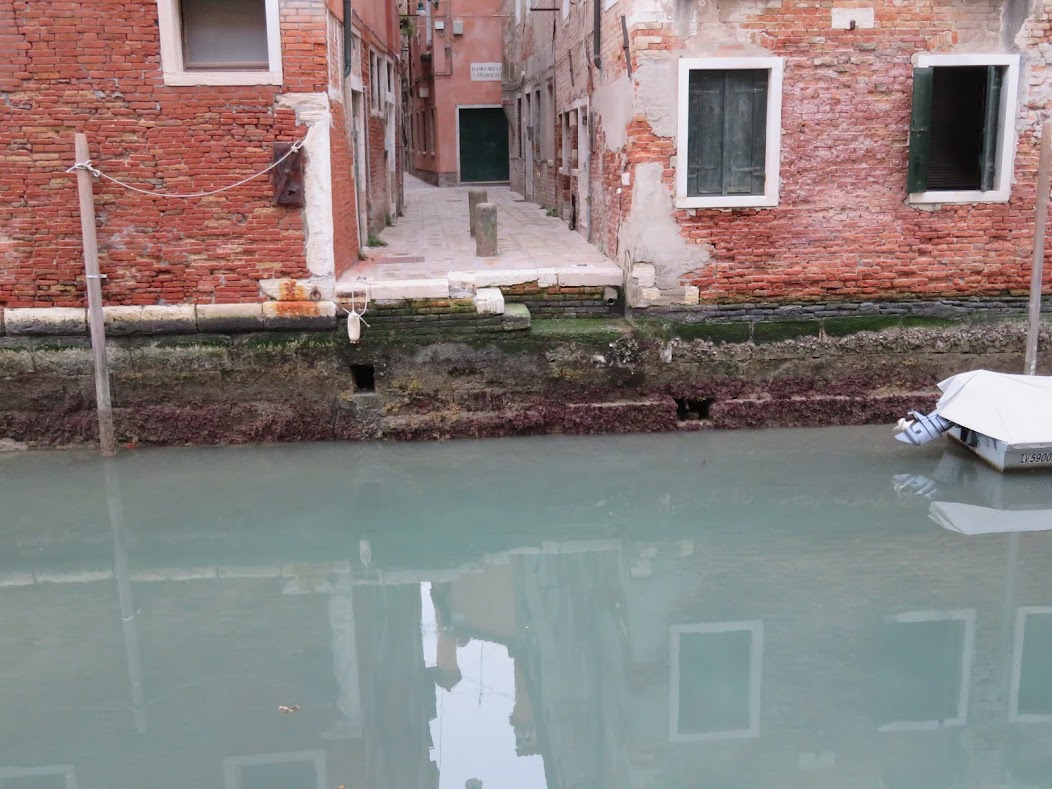
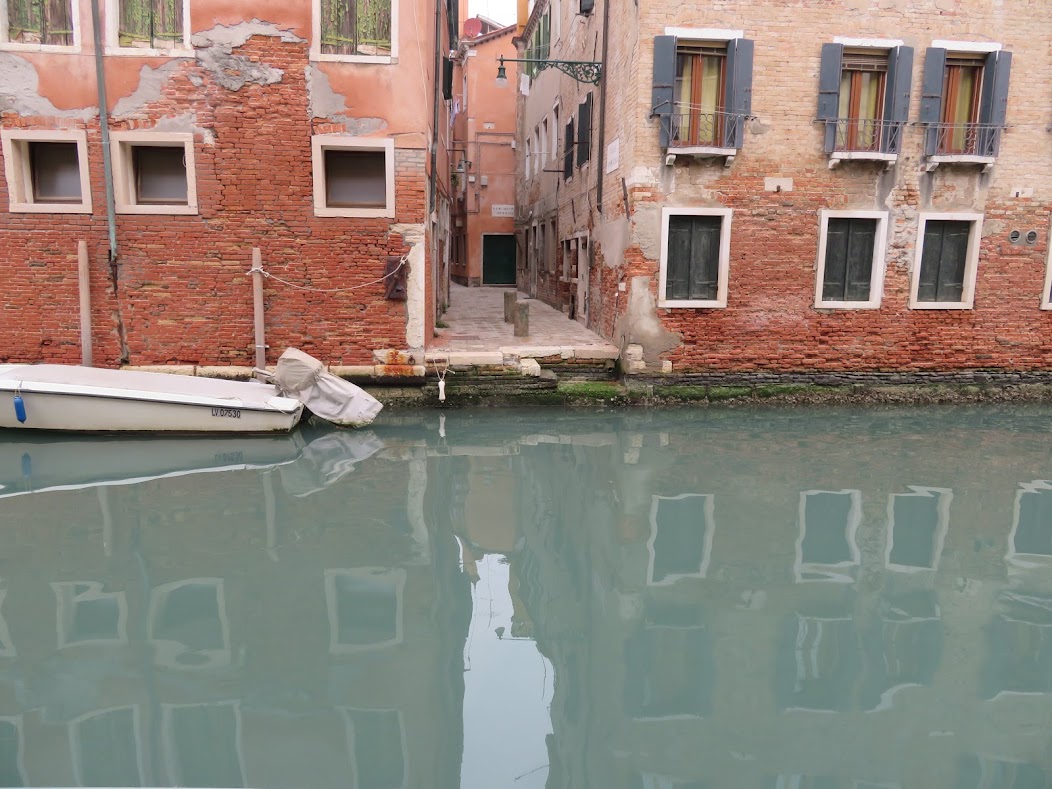
Go through a few days of this low-tide/high-tide cycle and it begins to seem normal. Because it is.
See you next January, when we’ll go through this again. I’ll bring popcorn, we can watch it together.
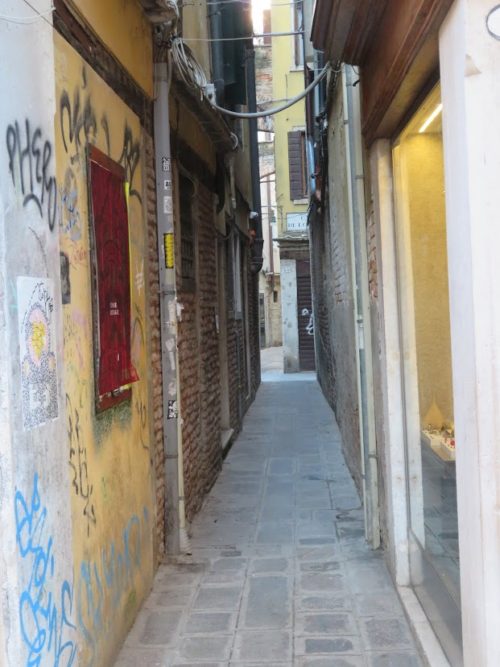
I had an interesting dream last night, set in Venice; nothing particular happened but I did awaken with this thought: It’s not the canals that make Venice so particular (special, different, beautiful, strange, etc.), it’s the corners.
Why is that? Because there are so incredibly many of them, and when you turn one, or two, or more, you either move ahead or you somehow find yourself pretty much back where you started.
That’s my new metaphor for Venice. As far as I can tell, after the enormous difficulties and turmoil caused by two years of Covid, somehow it seems that we’re back where we started. You might think that could be a good thing (“Back to normal!”) except that it’s not (“Back to normal!”). Things keep happening, but almost nothing really changes. Names change occasionally, but the headlines seem to be set on “replay.”
There are now fewer than 50,000 Venetians living in the historic center of Venice. (In 2021, there were 50,434). This is a threshold many people dreaded crossing, but it has been crossed nonetheless. I have no idea what this means in real life, because supermarkets continue to open. Who are their customers?
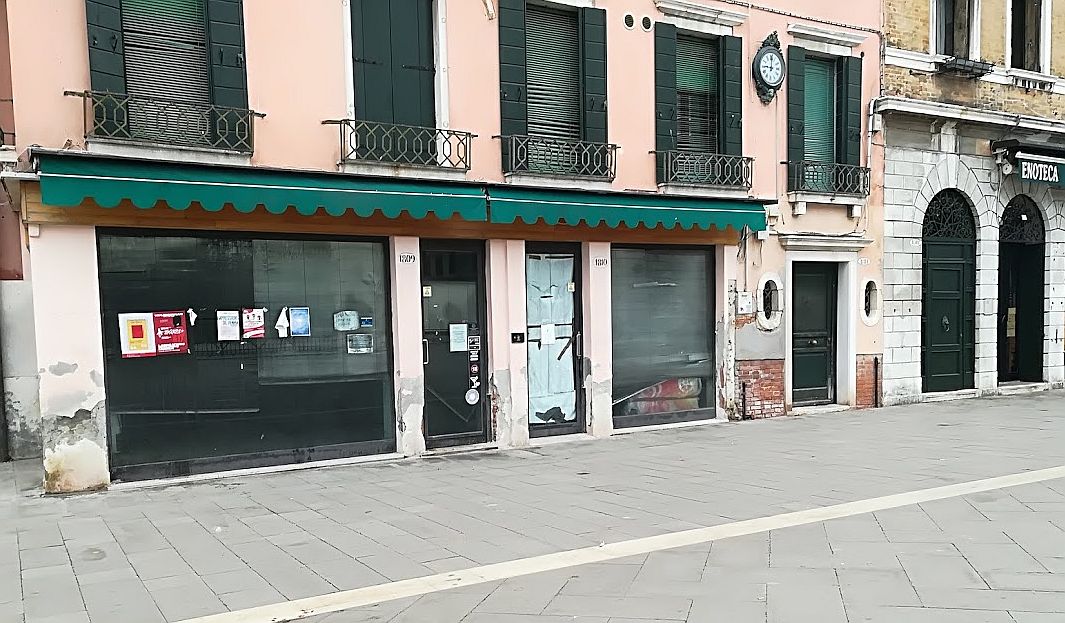
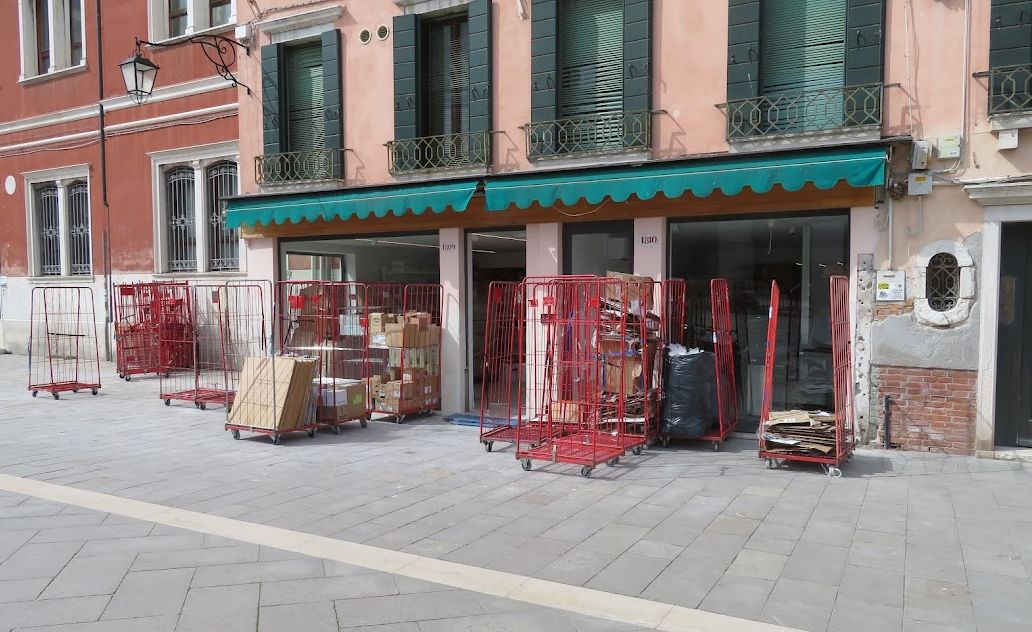
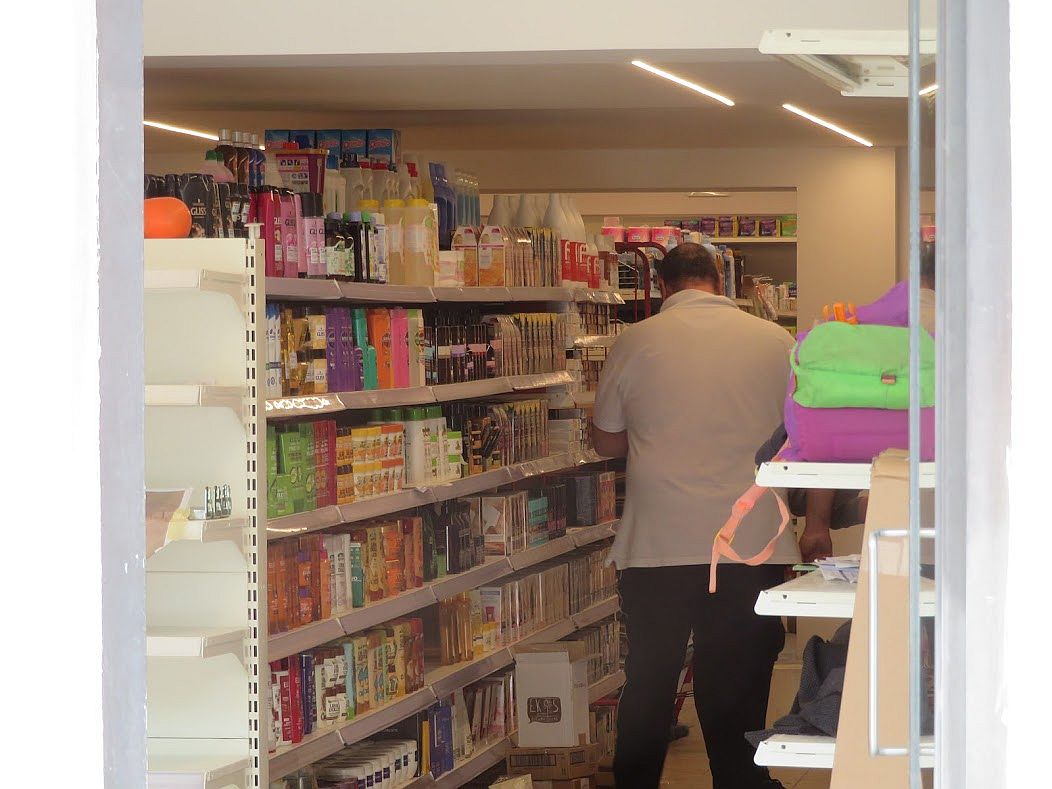
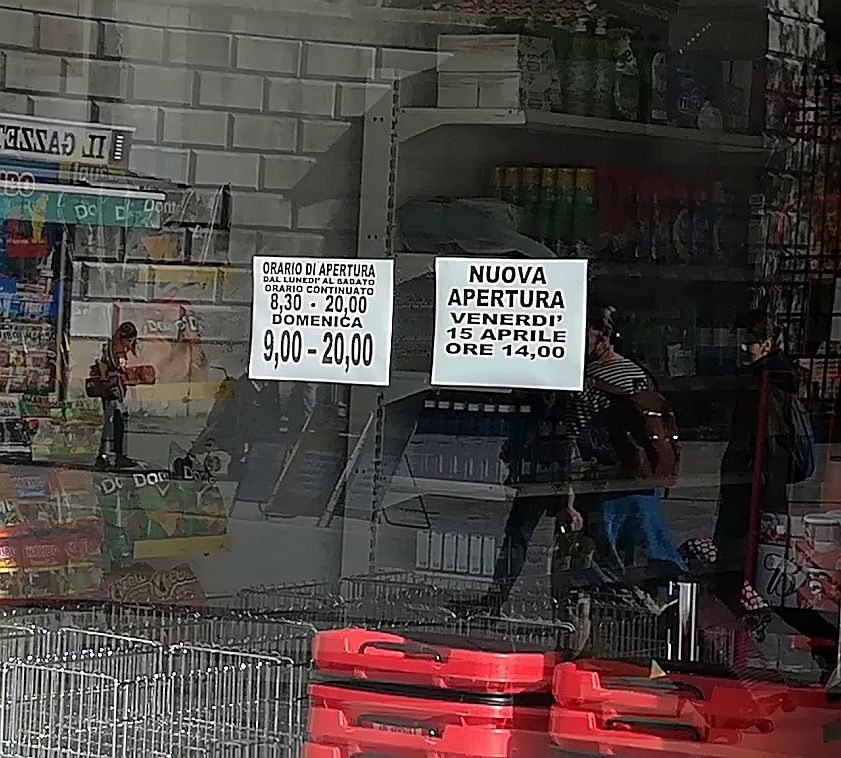
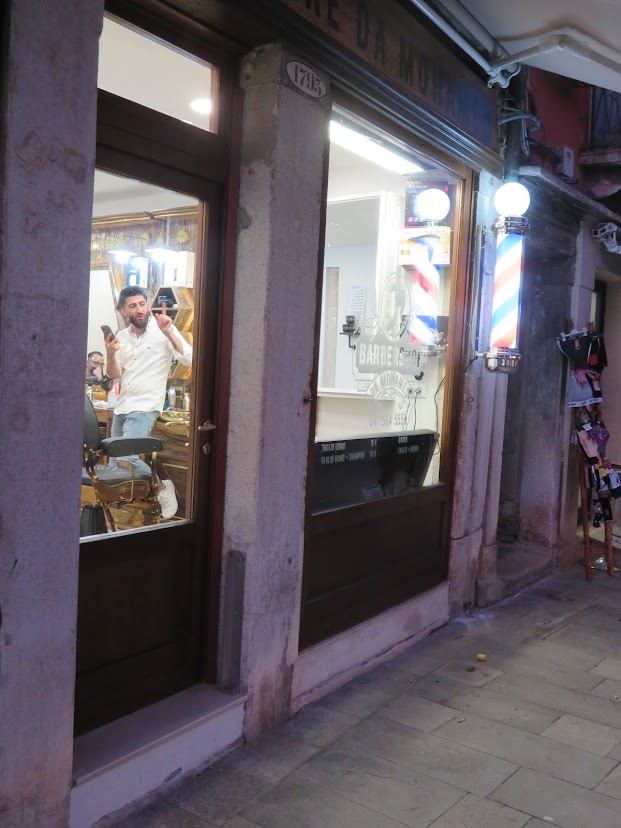
When the mayor uses the term “Venice,” he is referring to the general metropolitan entity, the preponderance of which is on the mainland. Everybody knows he really only cares about the mainland: “The future of Venice,” he said openly, “is Mestre.” Take that, Venice-lovers! The future of Milwaukee may well be Sheboygan, but to someone who thinks of the Piazza San Marco when he/she hears “Venice,” Mestre is a bit much. Still, this is how it’s going. Eight of the ten city councilors are from the mainland. The ninth is in Venice itself, the tenth lives on the Lido. And of course the mayor too is from the mainland, where he has business interests. So voices speaking up for the dwindling historic center are faint and few.
Meanwhile, daily life is made up of stores closing, stores opening. Unpredictable transit strikes and all-too-predictable wailing by ACTV, we have no money we have no money. Tourists: We want them, but they’re making us crazy. The sudden drought of Russian tourists has torn a new hole in the city’s financial fabric.
Cruises: Big ships are banished from the Bacino of San Marco. The cruise ships will enter the lagoon at Malamocco, toiling like container ships up to the raggedy docks in the commercial port zone of Marghera.
The MSC “Sinfonia” opened the season by docking at Marghera on April 9, the first of the 200 cruises scheduled for this year. Sound good? Not when you compare it to the 565 cruises that stopped (or started) in Venice in 2019. But those days are gone.
MOSE: There will never be anything new to say about this. Work stopped, problems found, money gone, problems found, money arrives, work starts again, problems found, date of completion always on the horizon.
The thing is that headlines blurt out news that any Venetian already knew years ago. Example: Barnacles. Lino mentioned the inevitability of barnacle encrustation to me back in 1994. It would be impossible to astonish anybody who has kept a boat in the water here. This is as much a fact as that water is wet.
Still, somebody finally noticed the problem. In 2018, an article announced the discovery by an underwater drone that the MOSE barriers were rusting and encrusted with barnacles. Time passes, nothing is done. In 2022, another headline: Barnacles!! Or to be even more precise: Mussels.
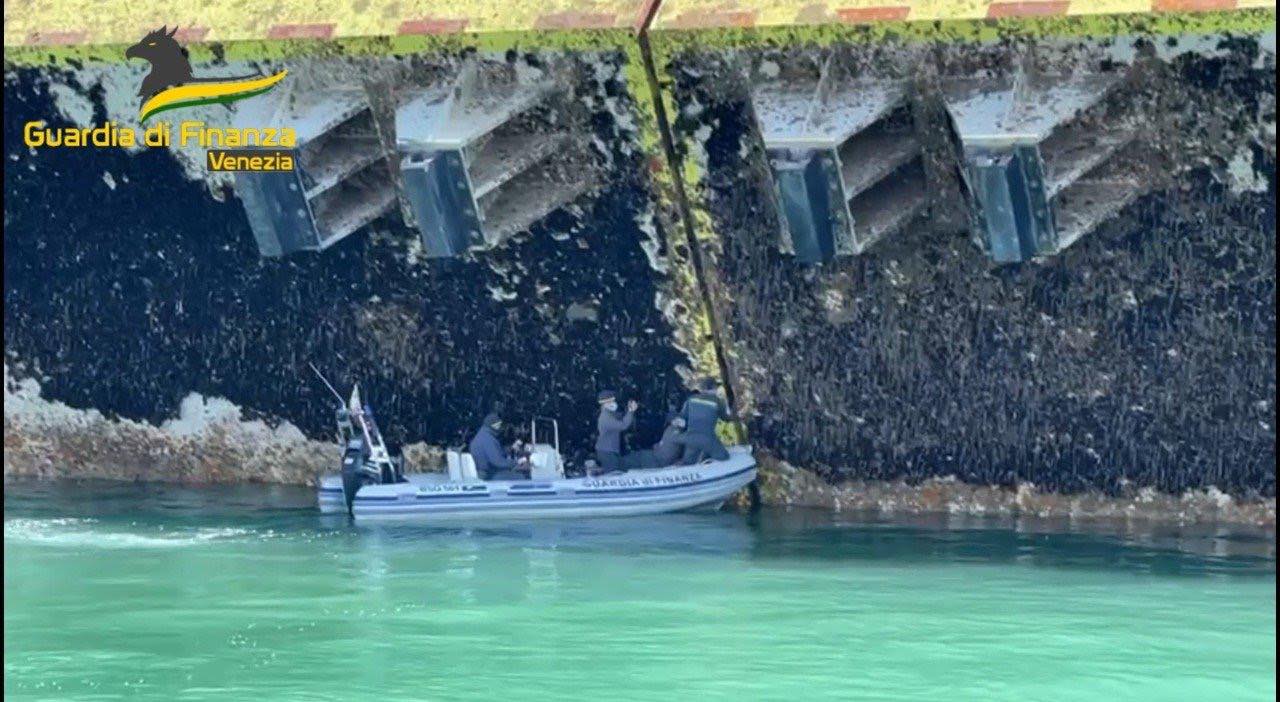
Turns out that the gates that have been lying in their assigned position underwater awaiting the call to block the tide have not been receiving the required and agreed-upon maintenance. The money for maintenance was allotted some time back, but it seems to have not been spent on maintenance. If the crud was predictable, so was the fate of the maintenance money.
Years ago, the cost of annual maintenance was forecast to be some 15 million euros. Then estimates of maintenance costs rose to 80 million euros, and now they’re projected to be 200 million euros per year. Where do these numbers come from? Are they breeding in dark corners, like wire hangers? In any case, vast amounts of money can’t ever sit still long enough to be spent on what they’re supposed to be spent on. When you actually need the money, somehow it’s just not there anymore.
There’s no need to read headlines, this has been going on for generations now. The big hold-back-the-tide project began in 1973, when the Special Law for Venice allotted money for a competition for designs (held in 1975). When the first stone was laid in 2003, the end was promised for 2010. We were all so young, so innocent… Then the 2014 deadline came and went, then the middle of 2018, then the beginning of 2019. The “acqua granda” of November 2019 broke several financial logjams, and work picked up with the promise of concluding in 2021. Sorry, I meant 2023. Endless years pass of “We’ll get there! Give us more money!” Lack of funds closed the works for the entire year of 2021. Rome sends millions, then more millions. And yet, somehow there is never enough.
Tourism: They’re baaaaack. Intermittently, and more often on weekends, still more often just during the day. There were a few Carnival crush-fests in the San Marco area, but nothing noteworthy. I suppose it just wouldn’t be Venice without 100,000 or more visitors in a day. And just now, on the cusp of the Easter weekend, we are back under siege again.
This is supposed to be good (even as we see the interminable lines at the vaporetto stops for boats to Murano and Burano). Venice has got to get back in the game, seeing as it’s the only game there is.
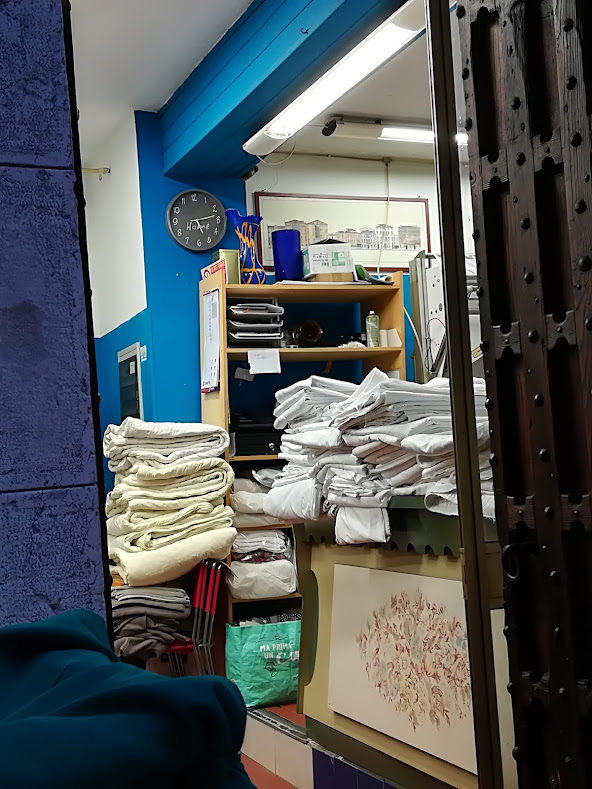
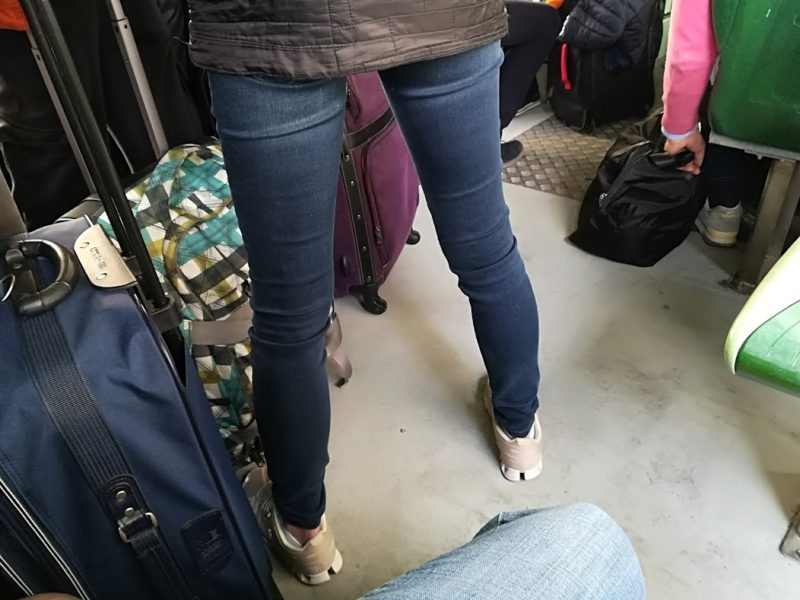

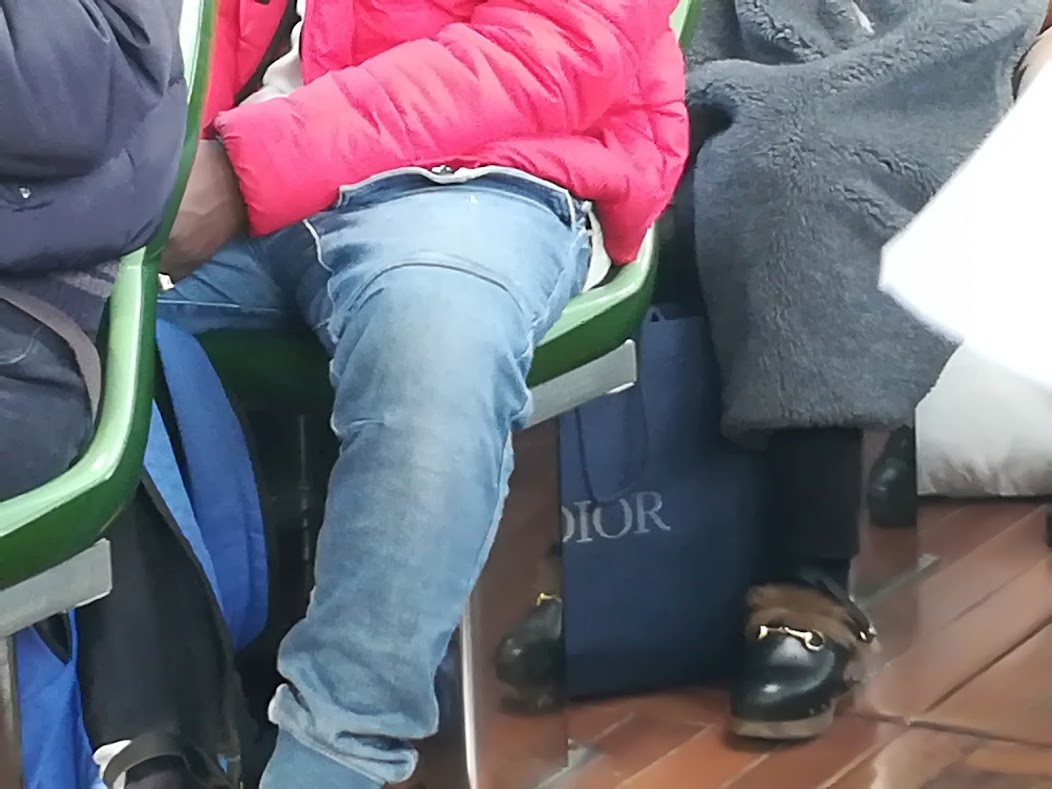
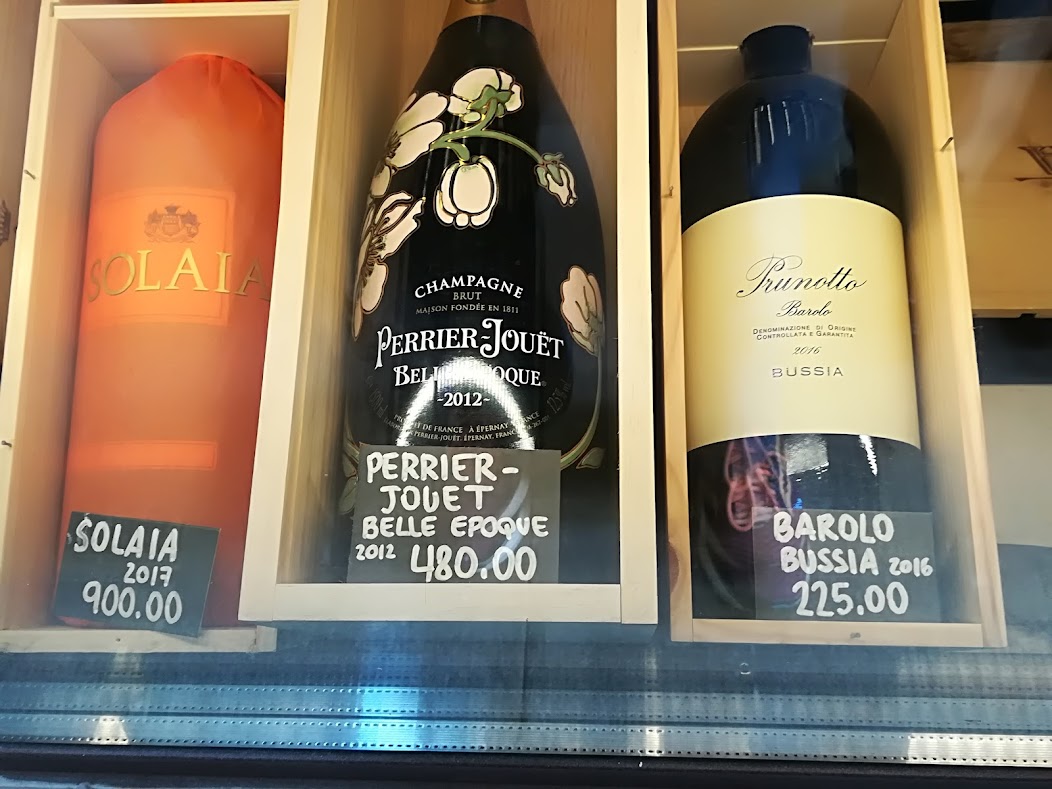
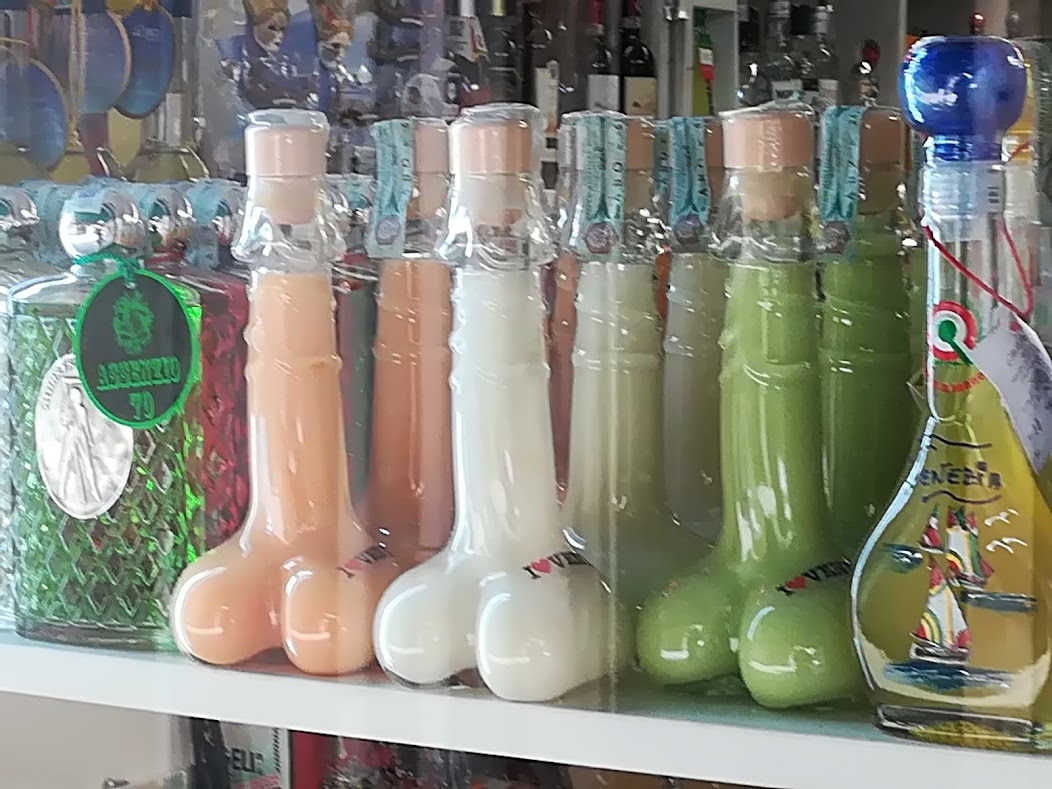
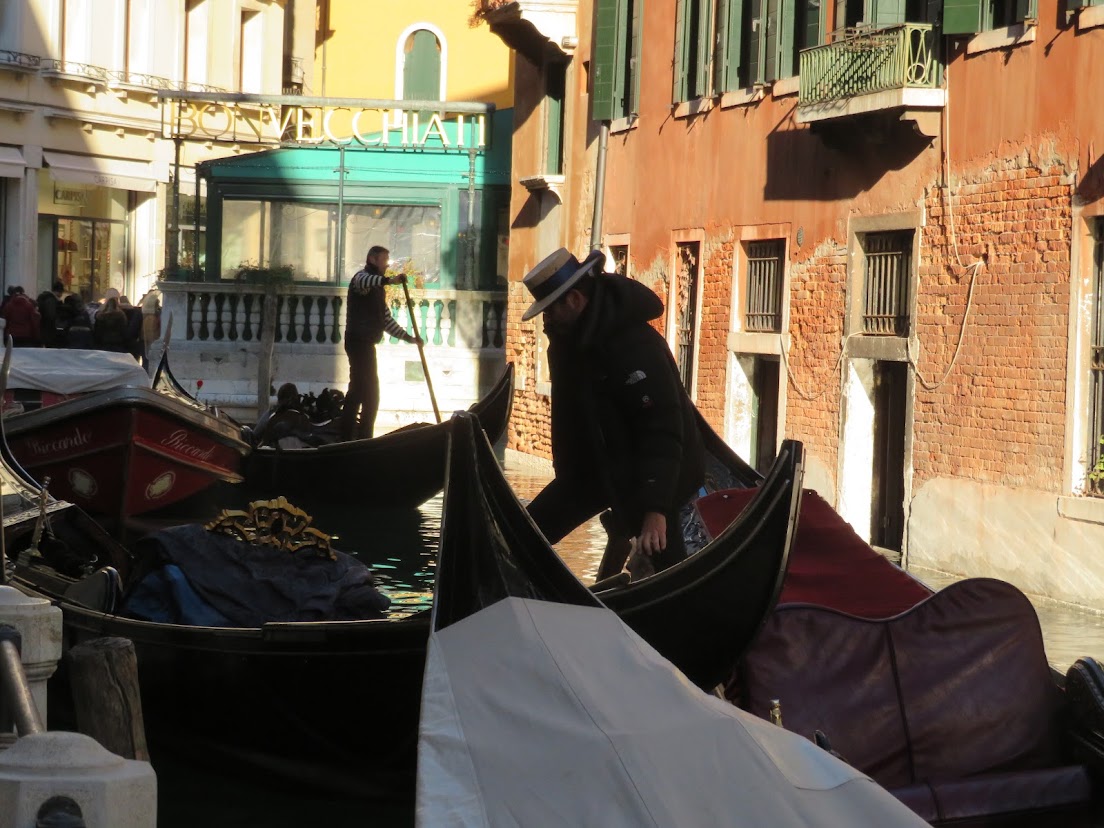
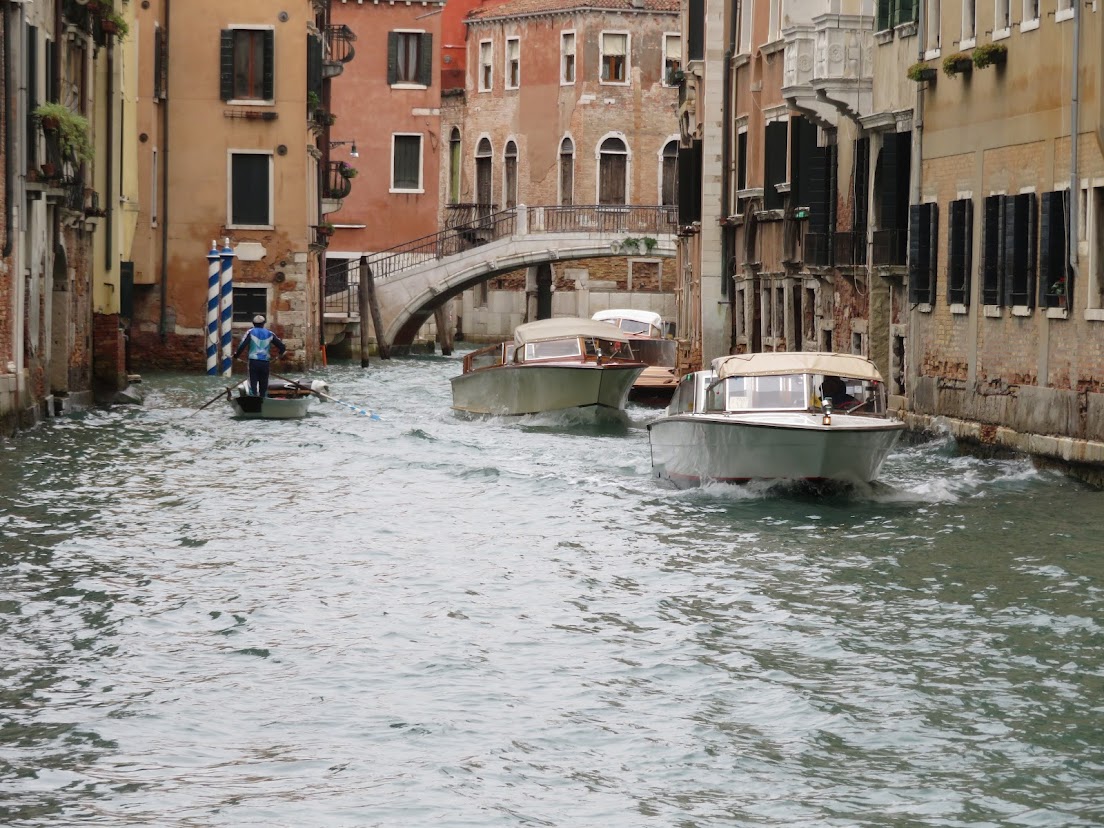
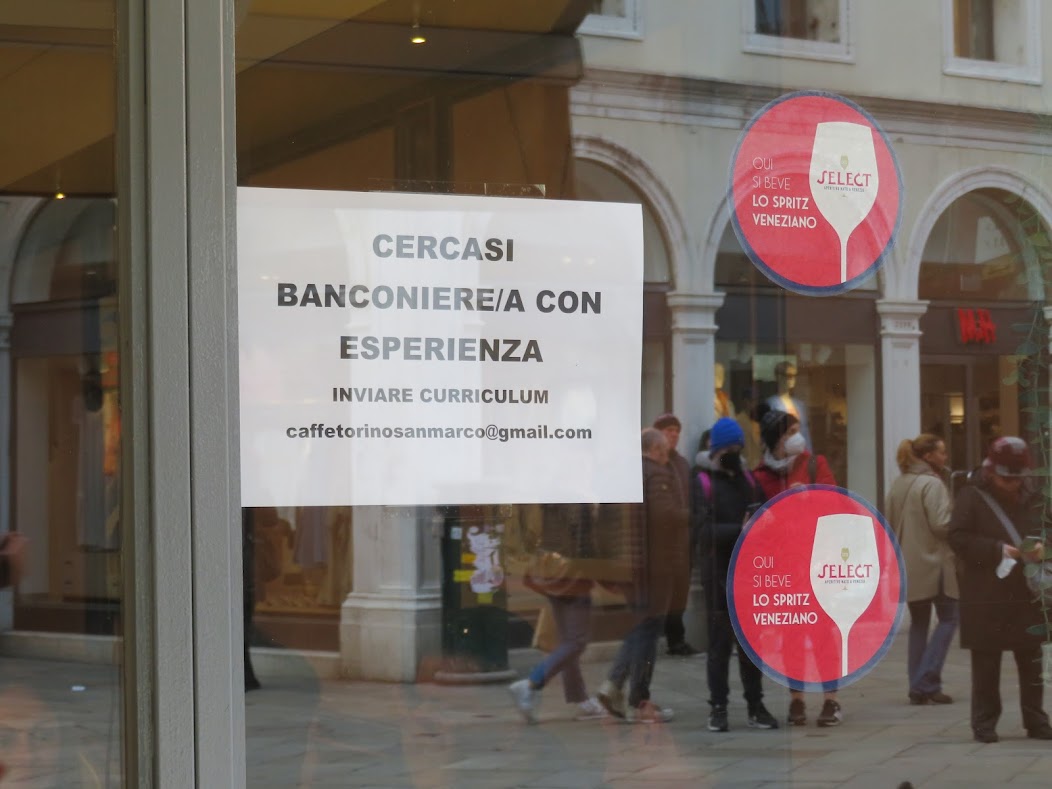
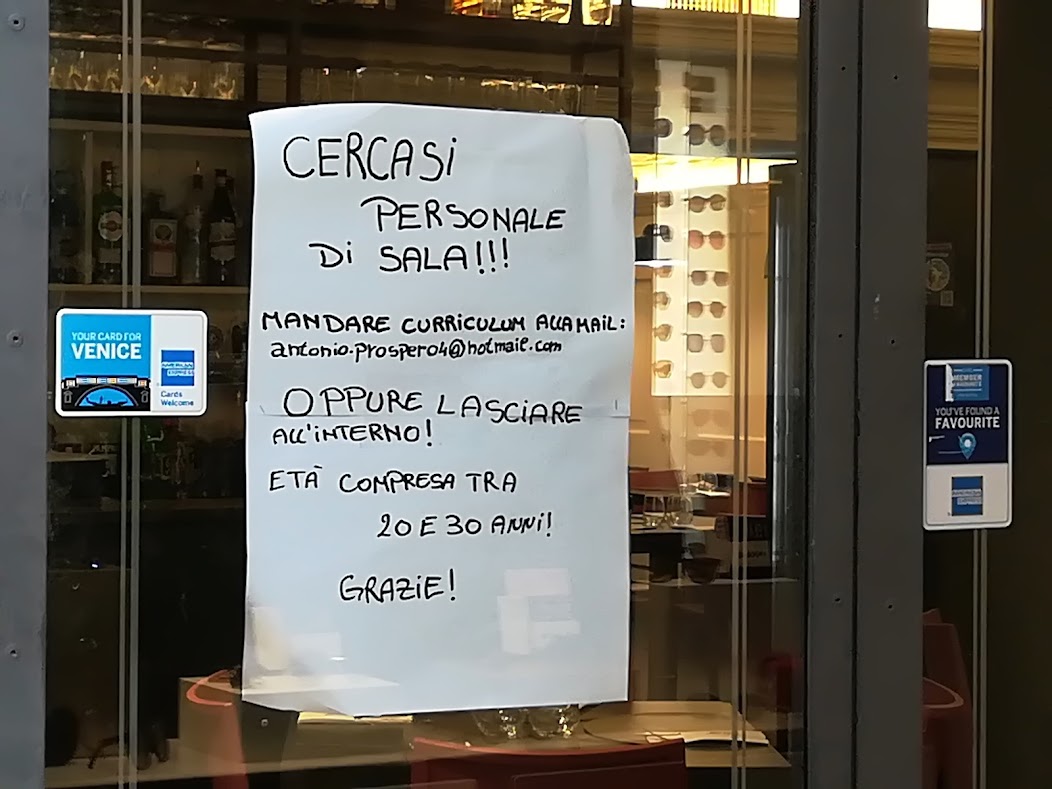
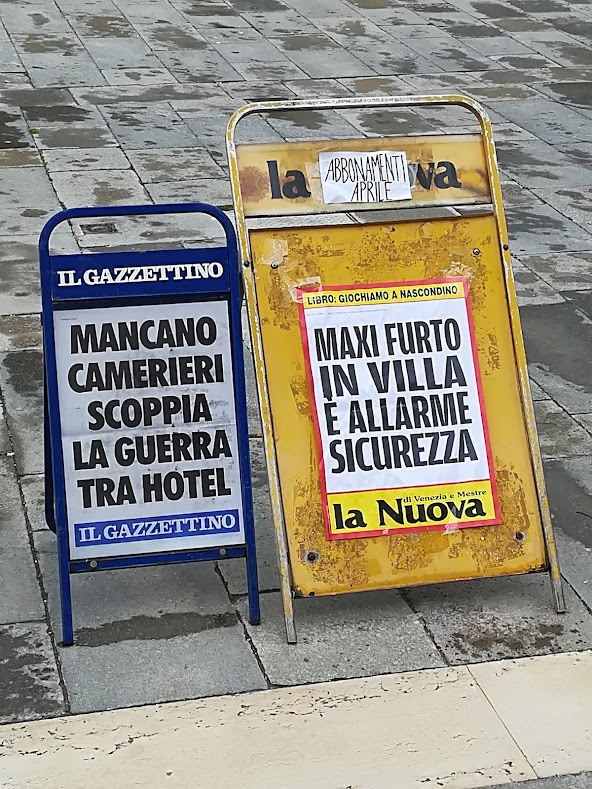
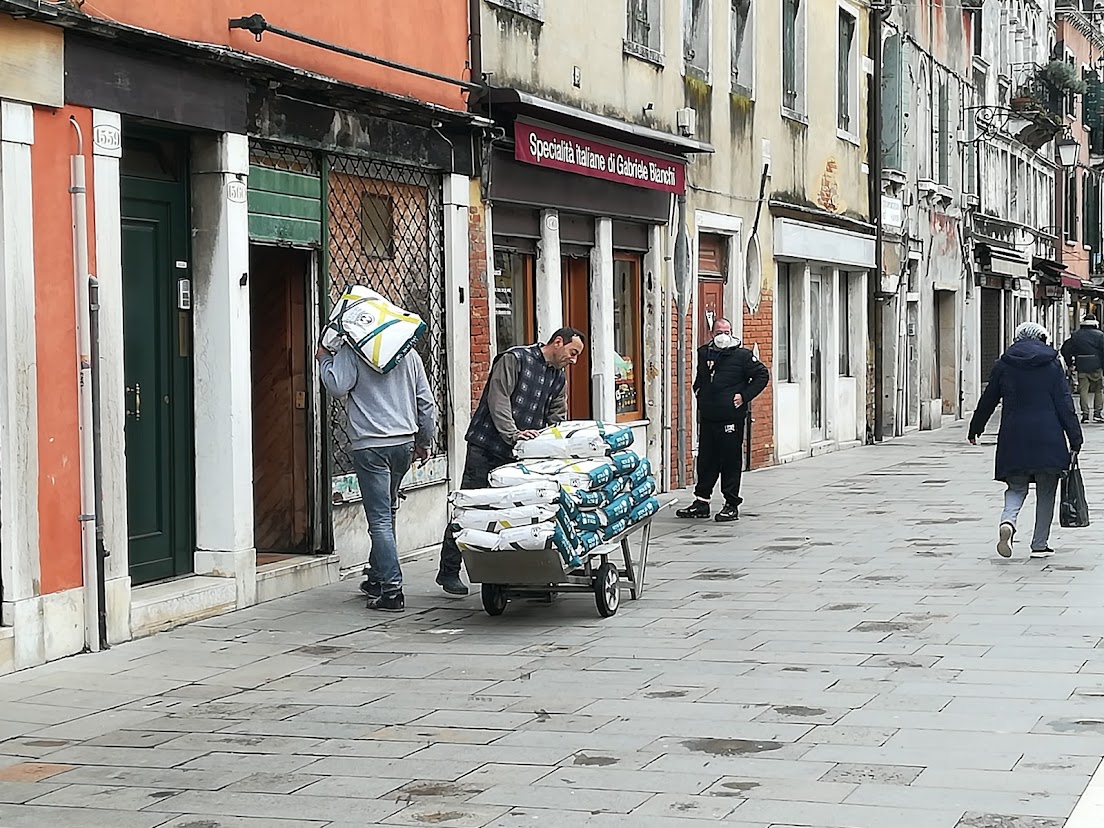
Last year sometime there was a brief quiver of excitement over the resurrected idea of installing turnstiles to control the flow of tourists entering the city at certain points. That idea has been mothballed. I think we don’t want to slow them down. The eternal subject of the selling a ticket to enter Venice has also been put aside. But these ideas will be back. They’re like the swallows going to Capistrano.
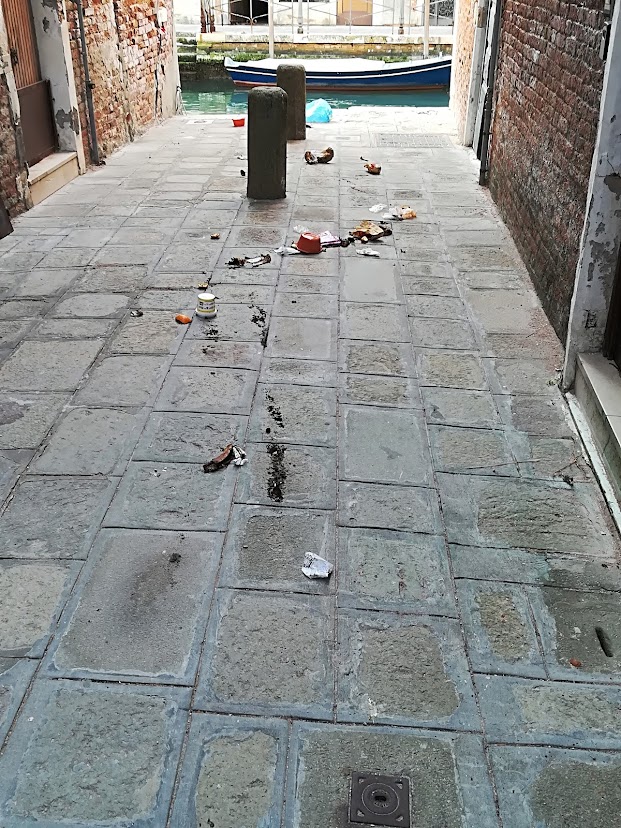


Biennale: Yes, it is opening this year — April 23 to November 27 — and the vibrations are palpable. The small park on the Riva dei Sette Martiri tends to host more light-hearted works. I’ll just call them “works,” because I can’t bring myself to say “art.” I honestly don’t know what they are.
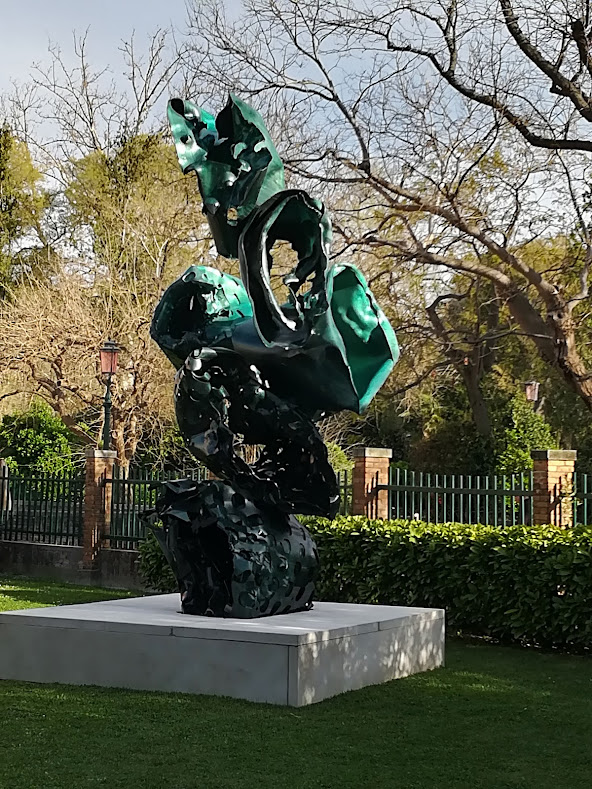
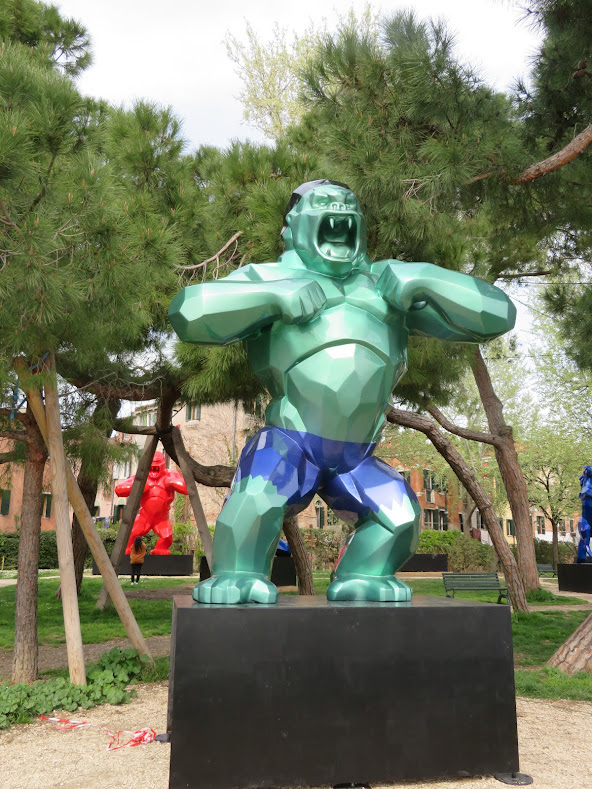
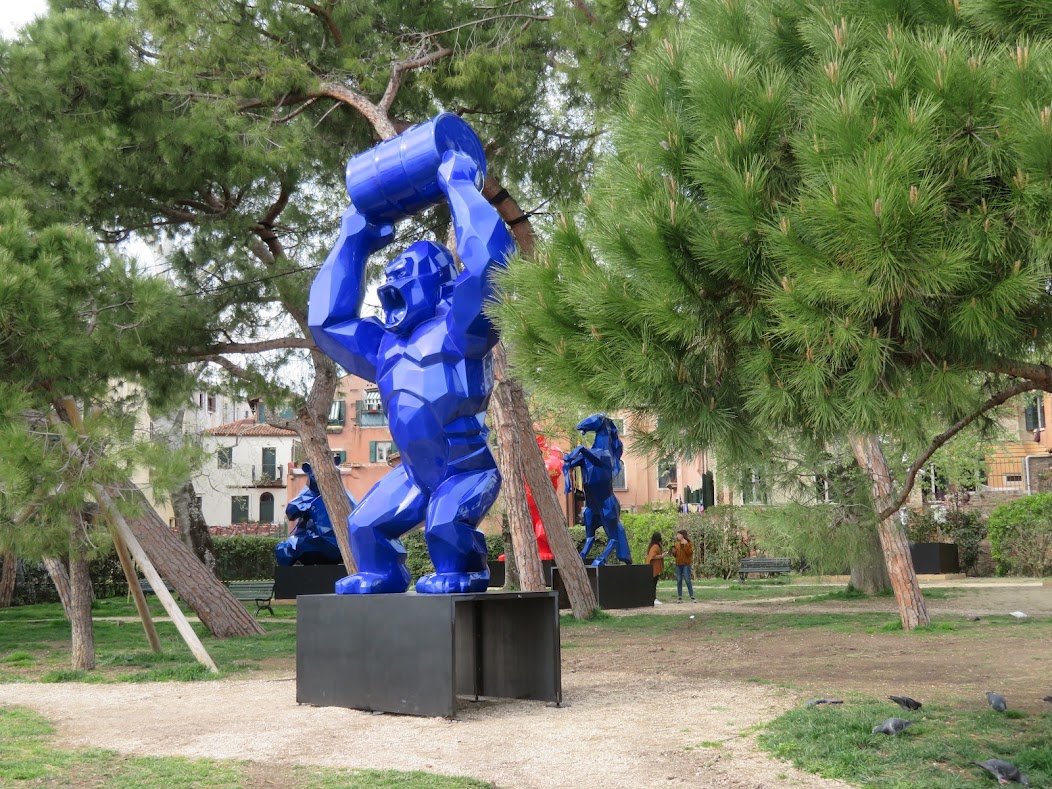

So here we are, caught in the endless cycle of everything. Maybe there will be something new around the next corner (or ten), but I’m not counting on it.
